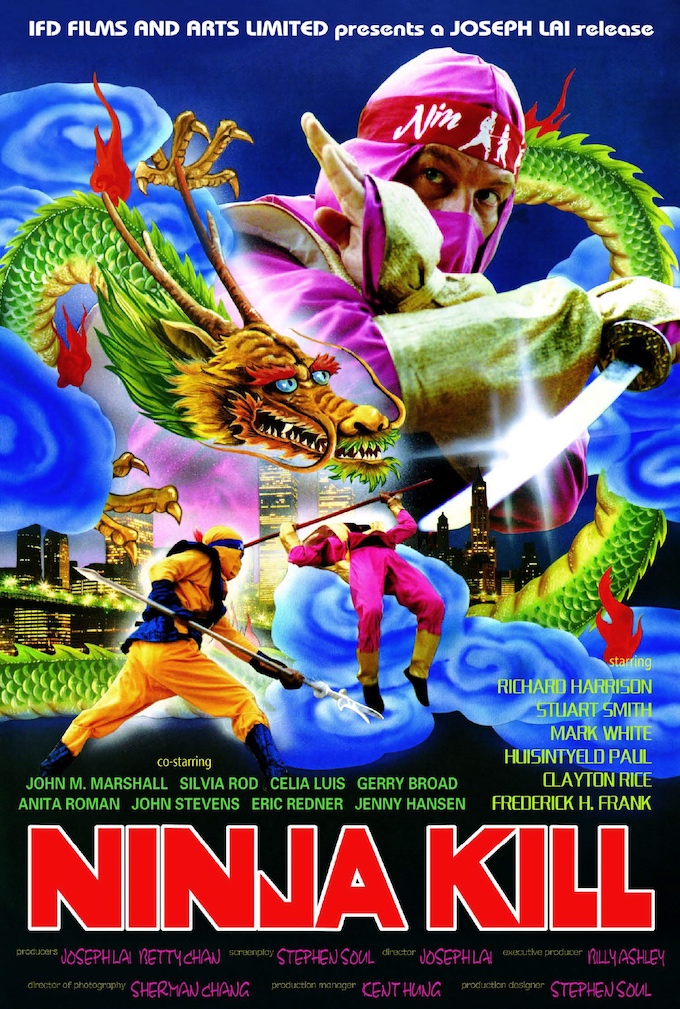Entretien avec
Joseph Lai
Existe aussi en Version Française
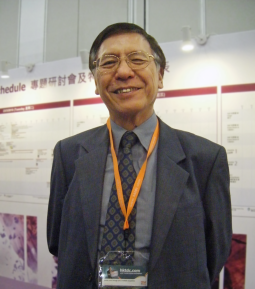
Sometimes, just like Smaug the Golden, one sleeps on long forgotten treasures. That is so for this never-published interview with Joseph Lai, boss of the Hong Kong film company IFD, to whom we owe countless "2-rolled-in-1" movies with bewildered and bewildering ninjas, unspectacular kickboxing films, and visually dreadful cartoons. These words were collected in 2010 at the Hong Kong Film Market, by our collaborator Arnaud Lanuque, a passionate specialist in Asian cinema. We publish them now, in 2023, for IFD’s 50th anniversary.
Thanks to Mr. Lai for sharing some of his precious time to answer our questions, Yannick "Drélium" Langevin, as well as Mike Leeder for his help, Toby Russell, and Jesús Manuel Pérez Molina for his additional information.
Interview conducted on March the 24th of 2010 by Arnaud Lanuque.
Mr. Lai, can you tell us about your background and how you got involved in the film business?
I was already interested in movies during my childhood. When I was around 7 and 8, I would go to see movies. But at that time, I was poor so my mother would not give me much money to buy tickets. So I would go to cheap movie theatres to fulfill my desire of watching movies. When I grew up, at university level, I joined with a friend a drama company. I learned how to direct plays, on stage, how to instruct actors to act, how to move on stage, the costumes. I learned a lot of technical aspects of the business there. I even won a prize for one of my dramatic plays. At that time, I was studying education and was going to be an English teacher. I was also writing articles which I sold to newspapers. I wrote critics after watching the films. It was a way for me to earn money while watching films. And so it built up my interest for movies. I saw a lot of films, of all kinds. I watched European films, American films, Chinese films even Chinese opera. There is not one style I don’t like, I like everything. I also learned a lot from them. Because in order to write critics, I had to know how to make a film, and did a lot of research about the background of the people involved and the technical aspects of filmmaking.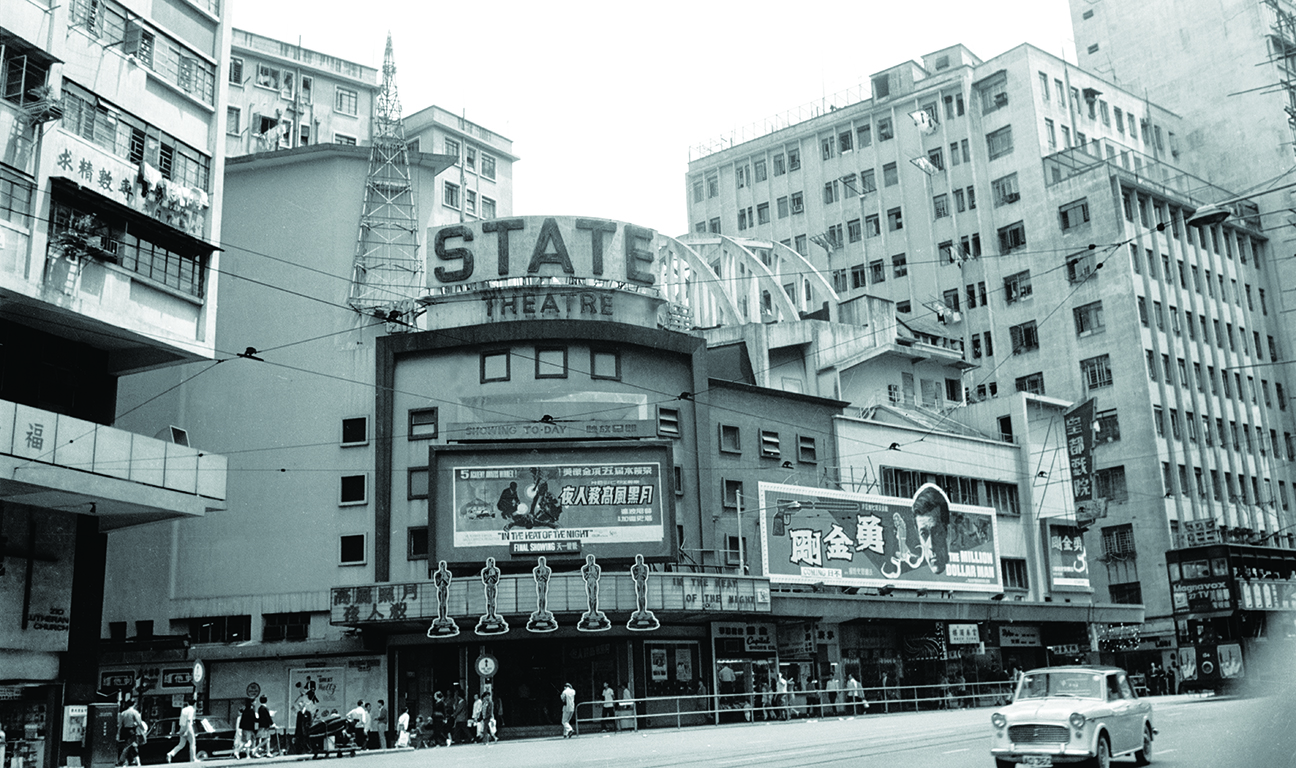 The Empire Theatre, built in 1952 and renamed as The State Theatre in 1959. This photo is from 1968, with "In the Heat of the Night" showing. This theatre was one of the most important in Hong Kong, along with the Broadway Theatre in Kowloon, or the Victoria Theatre in Central District.
The Empire Theatre, built in 1952 and renamed as The State Theatre in 1959. This photo is from 1968, with "In the Heat of the Night" showing. This theatre was one of the most important in Hong Kong, along with the Broadway Theatre in Kowloon, or the Victoria Theatre in Central District.
After I finished my college, I became a teacher. I had loaned money from the government to make it so I needed to work as quickly as possible to be able to reimburse it. I taught for 4 years. The system in Hong Kong for teachers was to be either on morning sessions or afternoon sessions. So it means, after working in the morning, I would have a lot of free time in the afternoon. I would use it to go see movies. At that time, around 1973, I had decided I would become a director. Thanks to my sister Terry Lai, who owns Intercontinental Film Distributors, I went to work as an assistant director for them.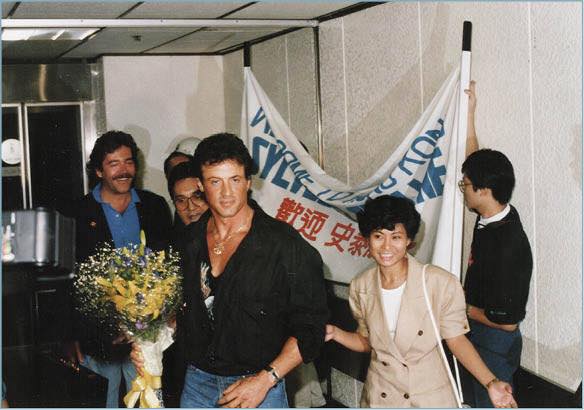 Sylvester Stallone and Joseph's sister Terry Lai, in the offices of Intercontinental Film Distributors Limited. Terry Lai founded Intercontinental Film Distributors Limited in 1969 along with Filipino producer Bobby A. Suárez (BAS Films). Joseph Lai started there, and then founded International Finance Development (also "IFD") in 1973. Both IFDs were not rivals. When Terry's company got very big, she gave some Thai and Filipino B movies titles to Joseph to distribute. IFD being a family business, Joseph produced most of his films with his cousin George Lai, and his spouse Betty Chan (who passed away from Covid in 2020).
Sylvester Stallone and Joseph's sister Terry Lai, in the offices of Intercontinental Film Distributors Limited. Terry Lai founded Intercontinental Film Distributors Limited in 1969 along with Filipino producer Bobby A. Suárez (BAS Films). Joseph Lai started there, and then founded International Finance Development (also "IFD") in 1973. Both IFDs were not rivals. When Terry's company got very big, she gave some Thai and Filipino B movies titles to Joseph to distribute. IFD being a family business, Joseph produced most of his films with his cousin George Lai, and his spouse Betty Chan (who passed away from Covid in 2020).
They were starting to make the move into producing their own films, in Hong Kong, but shot in English, with American actors like Chris Mitchum[Nanarland: Joseph Lai is refering to Asia Cosa Nostra and Master Samurai, two 1974 co-productions between Hong Kong and the Philippines starring Chris Mitchum]. As the use of English was not that common amongst Hong Kong people back then, I also got to translate the script from Chinese to English, do all the communication. I learned a lot from that experience. 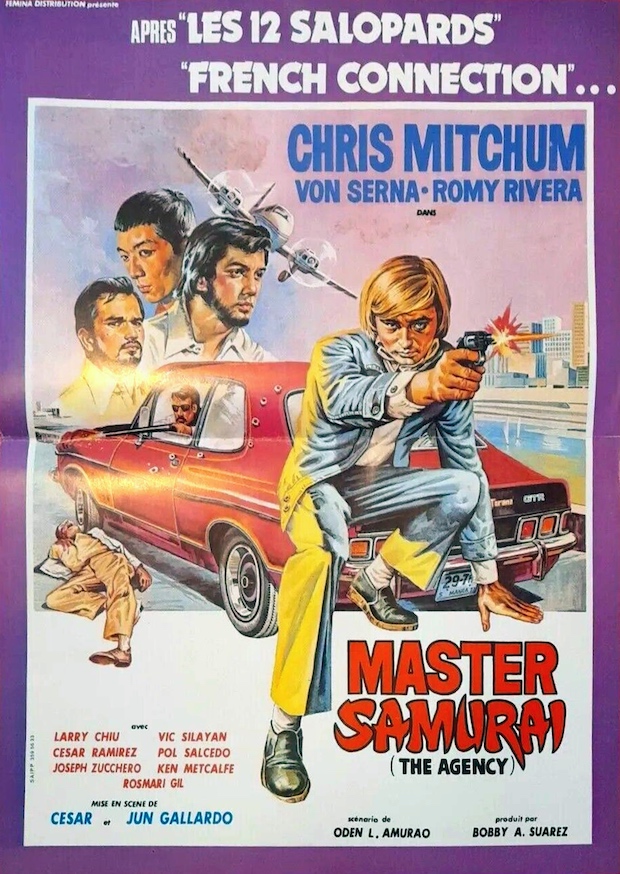
You started as an assistant director, but then quickly moved to distribution. How so?
Around the same time as I worked as an assistant director, I had thought about starting my own business. It was 1973. So, I went to Cannes to see movies. I really enjoyed it. I would watch films from 8 am to 2 am, sometimes I would not even eat! It’s really a very good place to see all kind of films. It was amazing. But I had no money. Hong Kong being an English colony, people wanted to see English films, even if they didn’t speak the language. By watching English films, you looked smart and good. Remember it was more than 30 years ago. So I thought, if I go to England, I can buy films but I have no money, those kind of films are very expensive, so I can’t do that. So I went to Greece instead.

Greece was a monarchy at one point, and they did a lot of good films during that time, but no one knew it. I went to the Greek version of Shaw Brothers. In Hong Kong, Chinese theatres could not show American films because of the political tensions between China and the USA. So I got the idea of buying Greek films and then dub them in English… in Rome. Because for us, when we saw white people speaking English, we would think it’s an English film. I bought those films for very cheap. I showed those films in Chinese theatres, in English. I was the first Hong Kong guy going to Greece to buy their films. I bought the rights for all Asia. It made money in Hong Kong. I also sold them in Indonesia. Just with Indonesia, I covered my cost. I was able to buy my office and my house (laughs). So I continued to go to Cannes and kept buying films. It’s me who distributed Alain Delon films like Le Samourai in Hong Kong and Asia, but not dubbed in English, in French with subtitles.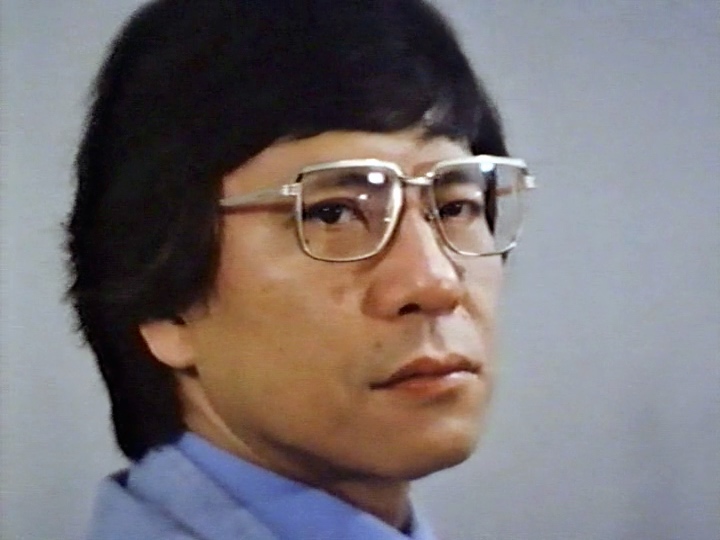
When did you start to produce films?
Around 1978. As the business was going up, I started producing films myself [Nanarland: in South Korea]. I did Dragon on Fire / Enter Three Dragons for which I recruited Dragon Lee [a.k.a. Ryong Keo]. Because Korean had strange regulations, not all companies could do film business there. So I made contact with a Korean company, they produced action films and Dragon Lee was their actor. I talked with them and used him. I used Carter Wong and Chen Sing to make The Magnificent a bit after. Enter Three Dragons a.k.a. Dragon on Fire (1978), a bruceploitation film directed by Joseph Velasco a.k.a. Joseph Kong andt Godfrey Ho. Produced by Joseph Lai and Tomas Tang through Asso Asia Films.
Enter Three Dragons a.k.a. Dragon on Fire (1978), a bruceploitation film directed by Joseph Velasco a.k.a. Joseph Kong andt Godfrey Ho. Produced by Joseph Lai and Tomas Tang through Asso Asia Films.
It was quite a good film. But at that time Hong Kong cinema people were very corrupted. Even if you had a very good film, it was very hard to play it in the ordinary Chinese cinema circuit. You had to pay them. It was different with English theaters. It didn’t make good business because of that. So after this experience, I changed my plans. Originally, I wanted to aim at the Chinese audience all over Asia. I decided to rely on American, European, African and Middle East markets instead. So I had to change my production system accordingly. This way, through English Language, I could sell my movies to East and West Africa.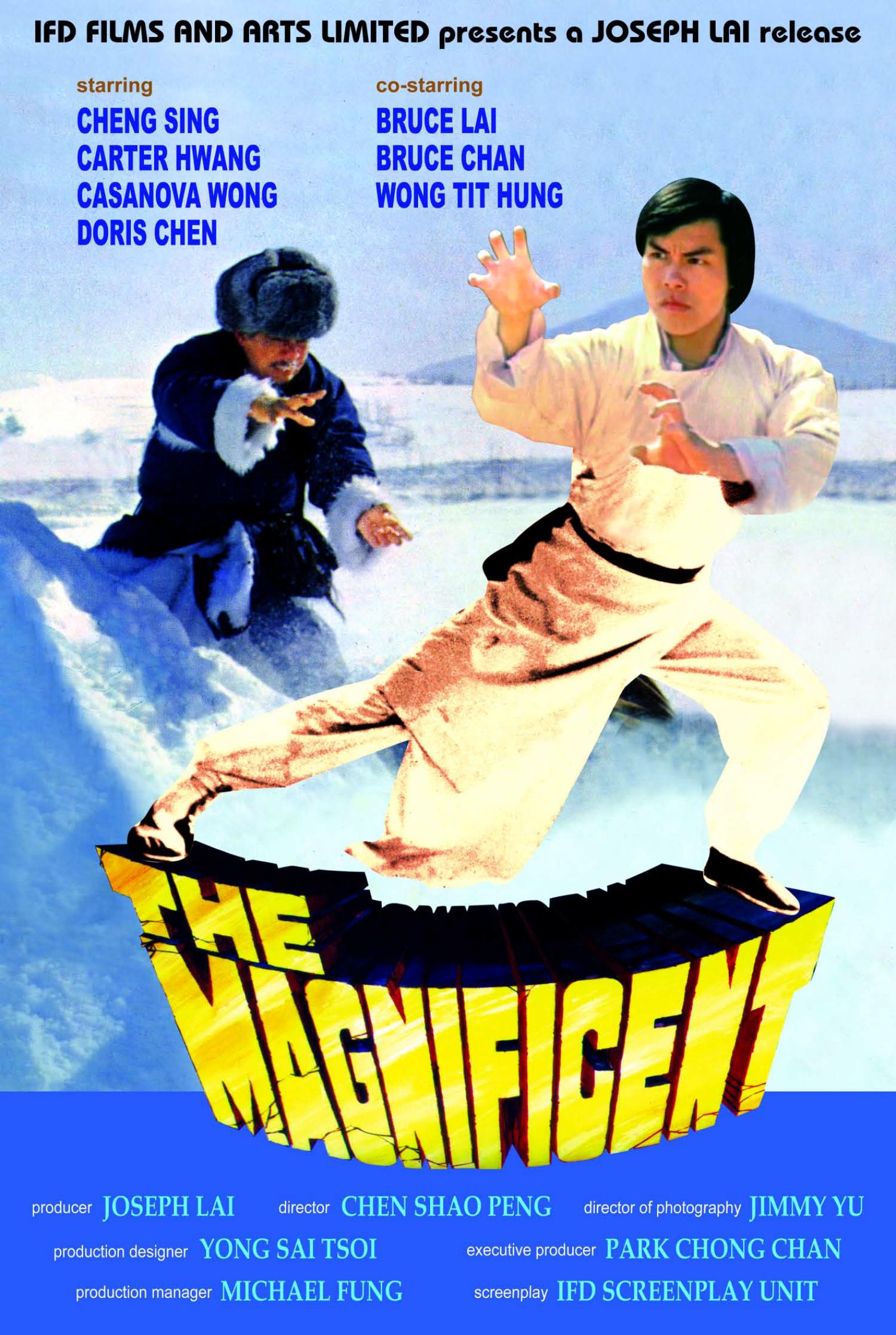 The Magnificent (1978) was one of Asso Asia co-productions with Korea. Godfrey Ho worked on this film as assistant director. The title quite clearly tries to be confused with Jackie Chan's Magnificent Bodyguards, and the film features the infamous clone Jackie Chen!
The Magnificent (1978) was one of Asso Asia co-productions with Korea. Godfrey Ho worked on this film as assistant director. The title quite clearly tries to be confused with Jackie Chan's Magnificent Bodyguards, and the film features the infamous clone Jackie Chen!
I also found Taiwan did a lot of action films. I bought Taiwanese films and Hong Kong films, but less those because they were more expensive, and re-exported them to African and Middle East countries. I met a French distributor in Cannes who bought the films for France and the French former colonies. Martial arts pictures were in very high demand and Taiwanese films were not in enough number to cover the demand. So thanks to my relation with Korea, I started to co-produce. And I started buying some of their films too.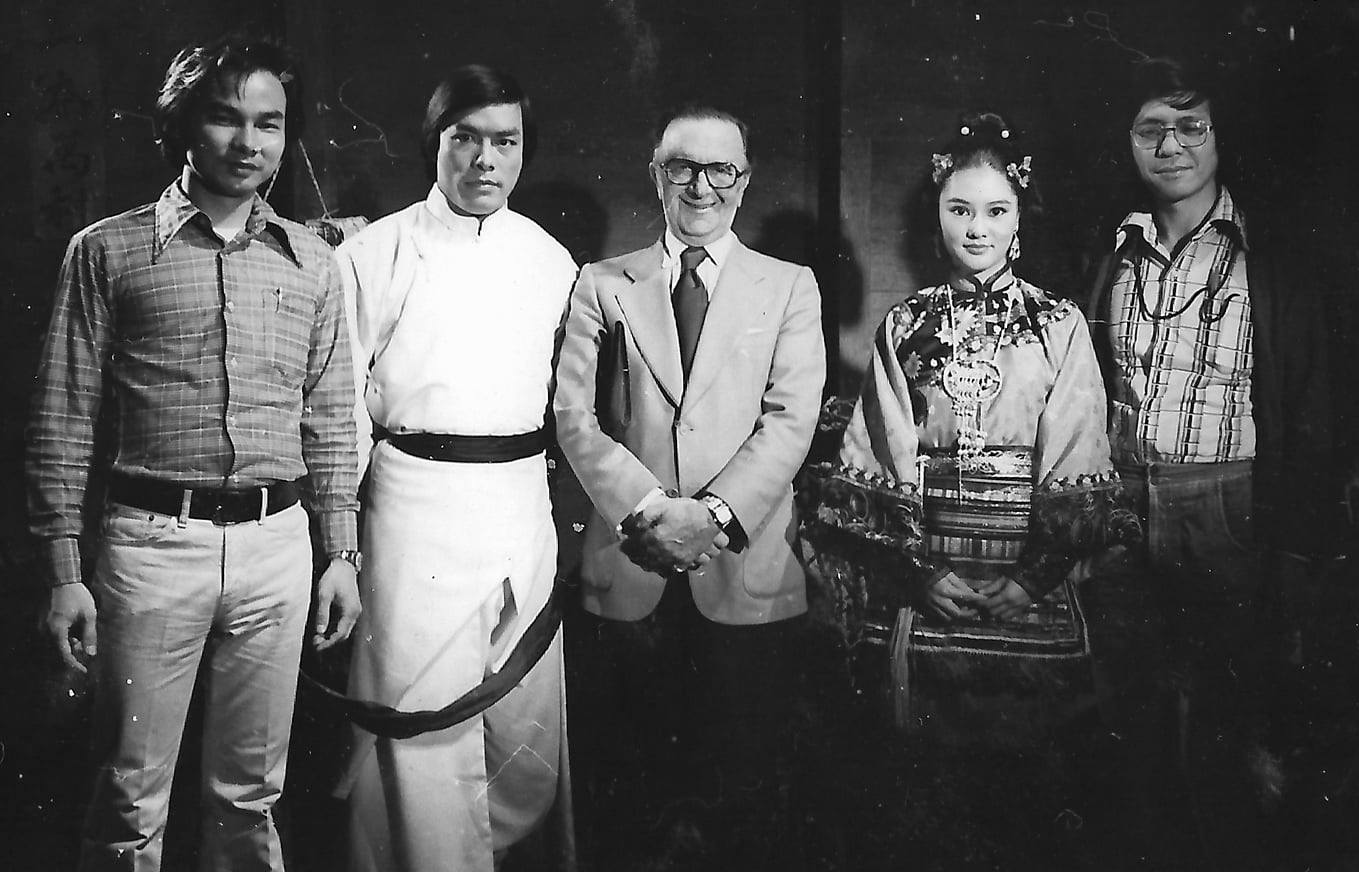 From the left to the right : Tomas Tang, actor Carter Wong, an unknown Western man (probably a distributor or a producer), actress Doris Lung, and Joseph Lai. The costumes are those the actors wore in The Magnificent [photo courtesy of Toby Russell / IFD Films & Services Ltd].
From the left to the right : Tomas Tang, actor Carter Wong, an unknown Western man (probably a distributor or a producer), actress Doris Lung, and Joseph Lai. The costumes are those the actors wore in The Magnificent [photo courtesy of Toby Russell / IFD Films & Services Ltd].
Was there anyone from your company over there to supervise the shooting?
At first, we really sent people over there. Actors, action director, director. But later on, the Korean people wanted to reduce their cost so we just sent mainly martial arts director. Because they didn’t have good ones over there. And some key crew members also, like stuntmen.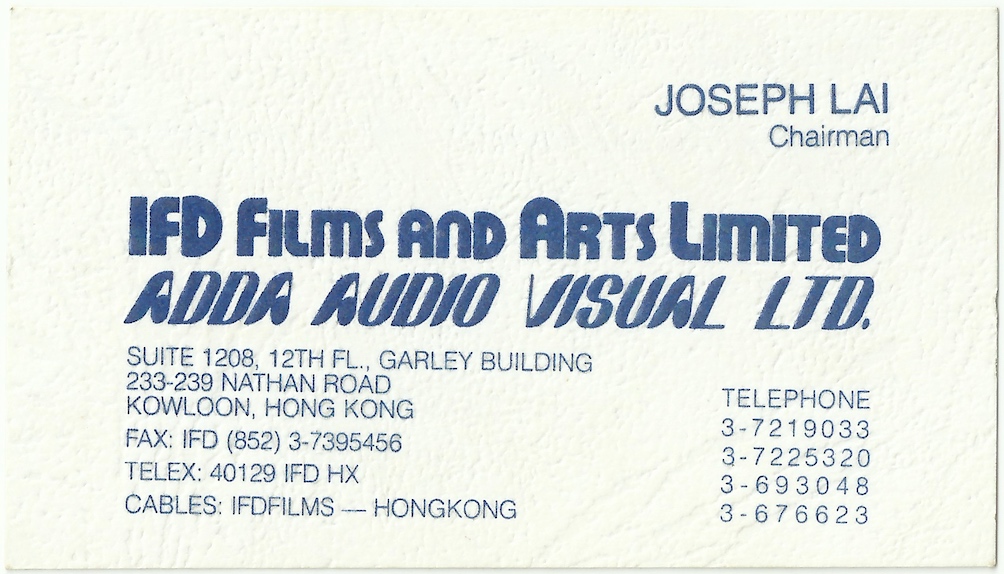
Would there be a different cut according to the country of release?
Originally, we didn’t re edit them. Later on, we did it with inserting western actors. It’s very strange, no other producer in the world do as I do. But I do it in a logical way, following the trend of the market. But no one knew at the time (laughs).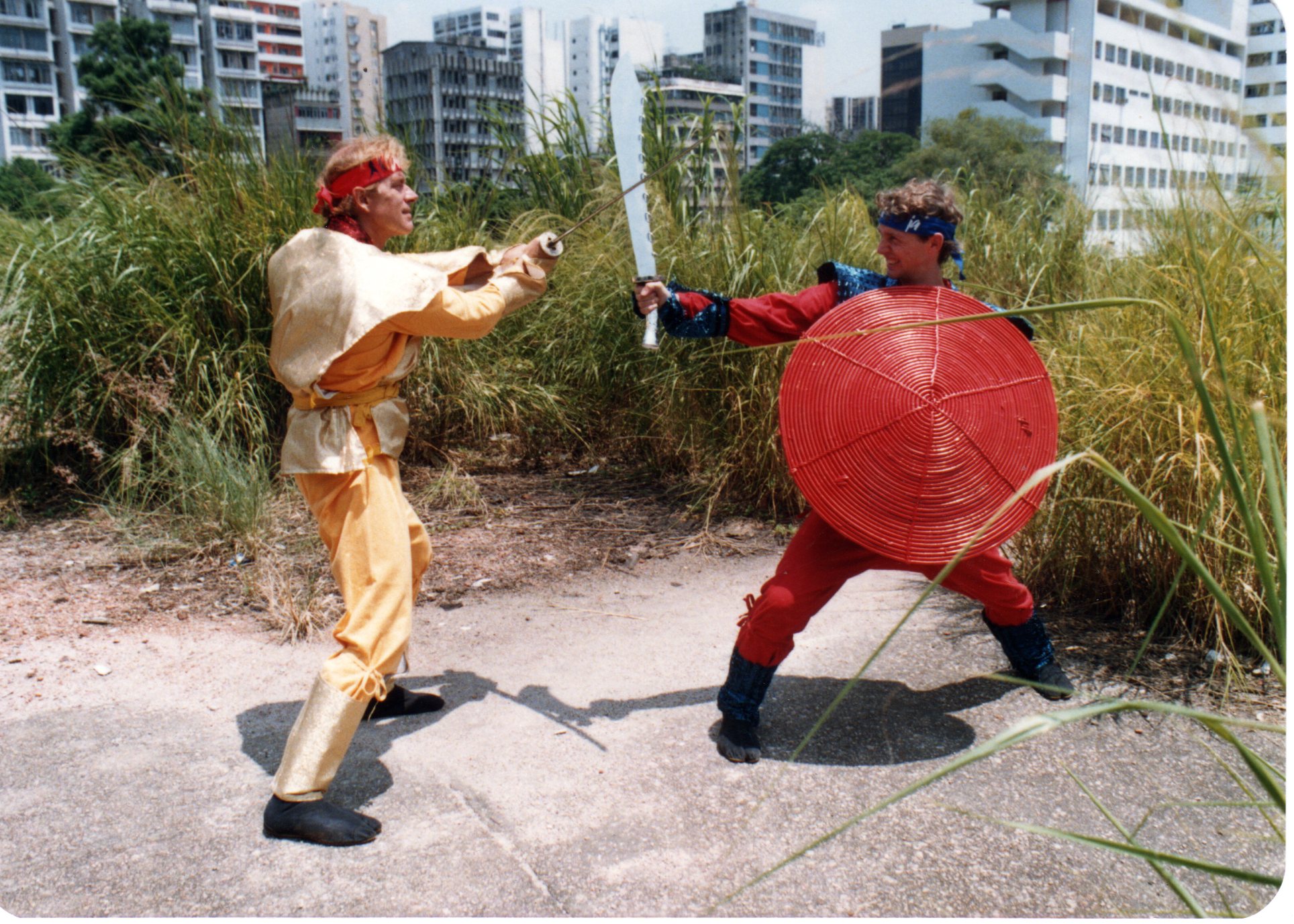 Richard Harrison and Grant Temple, dans Ninja Operation: Licensed to Terminate (1987).
Richard Harrison and Grant Temple, dans Ninja Operation: Licensed to Terminate (1987).
How did you get this idea of adding scenes with western actors in pre existing films?
During that time, there was a German distributor who always bought my films. He told to me: « People really love your martial arts films but it is always Chinese fighting Chinese. Why don’t you use White actors instead? ». I discussed this idea with my production crew. They thought it was possible. That’s what I learned from Bruce Lee. He shot Game of Death but it was never finished. So they used doubles and such tricks to finish it and have it released in the whole world. I learned the technic from this film. We could use our films, add western actors in it and then sell them to western countries.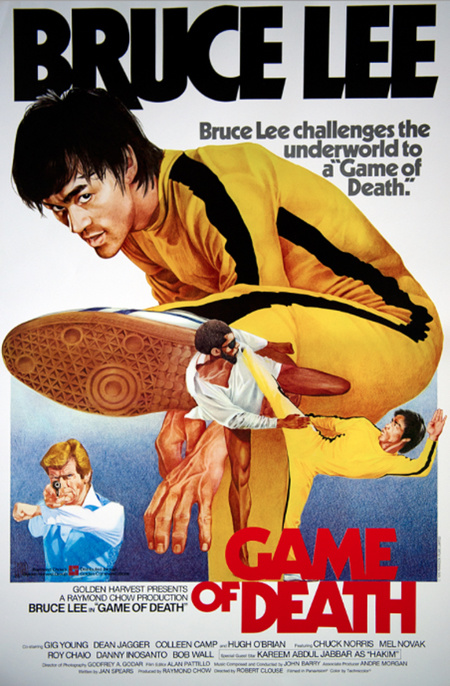
At the beginning of my business I only bought rights by region: African rights, Middle East rights. Later, I bought the whole property, the original negative. I did it with Taiwanese films, Korean films, Filipino films and Thai films [Nanarland: and even a Brazilian erotic movie, Doce Delirio, from which a lot of scenes were cut-and-pasted into the crazy Joy For Living Dead]. Because Asian films only did one master negative, contrary to the US way. I bought them. Some people said I stole those films but that’s not true, I bought their property. From then on, I could do whatever I want. So we used them to remake them as action films for the Western market. We sold films all over Europe. Even in Switzerland, the cinemas over there played my films. I made those films famous. The other big market was the USA. Actually, I don’t really like my films, it’s business.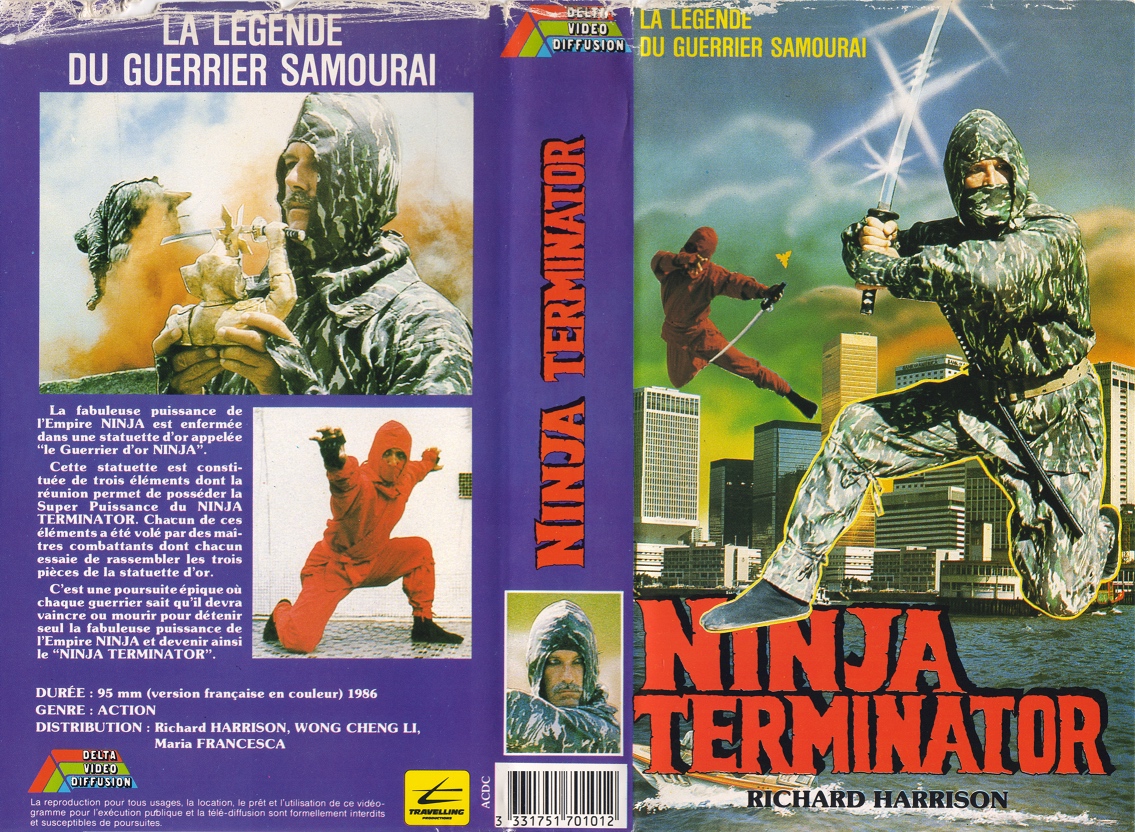
Your most famous kind of productions were the Ninjas films. You even got Richard Harrison to play in a couple of them. Can you tell us about them?
When I travelled overseas, I would always check out the cinemas and video shops to see the market. One day I saw this movie called Enter the Ninja, produced by Cannon. I didn’t find it very good but people seemed to like it. Ninjas films were easy for us to do because Ninjas being covered up, no one knows who is under the costume. I recruited Richard Harrison because he was a famous actor. Godfrey Ho had worked with him before and had kept contact with him [Nanarland : in 1975-76, Richard Harrison did Marco Polo andBoxer Rebellion for Chang Cheh and the Shaw Brothers, where Godfrey Ho was then working as an assistant]. Peter Lee Ying Tak (on the left), Joseph Lai (at the center) and Richard Harrison (on the right, with his back to the photo) in Inferno Thunderbolt. This is one of the very few appearances of Lai in a movie.
Peter Lee Ying Tak (on the left), Joseph Lai (at the center) and Richard Harrison (on the right, with his back to the photo) in Inferno Thunderbolt. This is one of the very few appearances of Lai in a movie.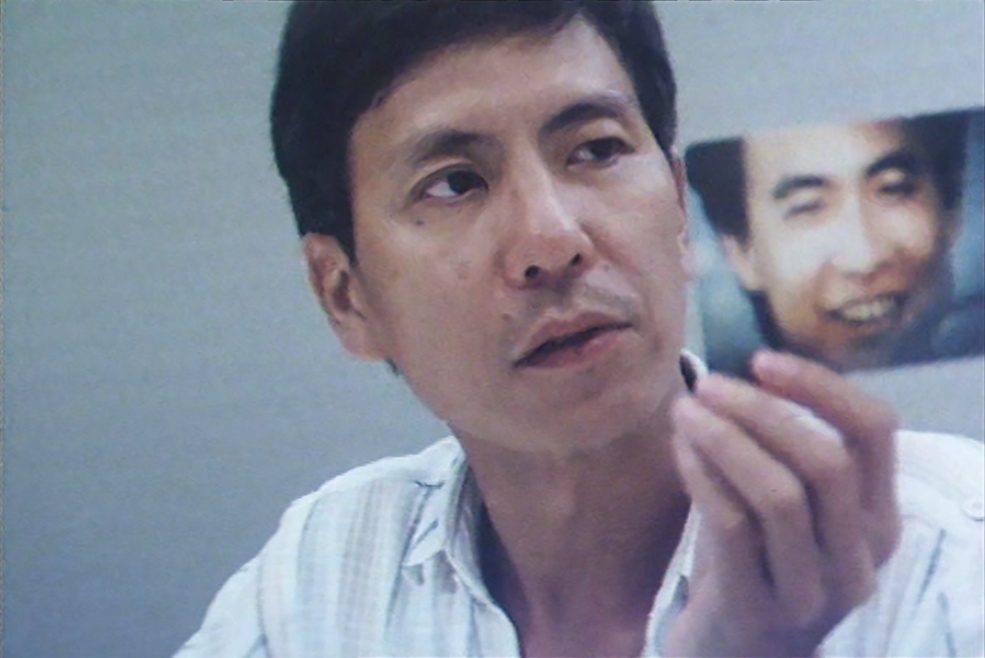 Joseph Lai without glasses in Ninja the Protector.
Joseph Lai without glasses in Ninja the Protector. Another Joseph Lai cameo, this time in Ninja Hunt.
Another Joseph Lai cameo, this time in Ninja Hunt.
I made him come to Hong Kong to work on our film and paid him good money for that. I met him a few years ago in America and he asked me how many films I did with him. He doesn’t even know (laughs). I think we did around twenty films. My team was quite clever. We made him stay in Hong Kong two to three months. He came two times actually, because he and his wife liked Hong Kong.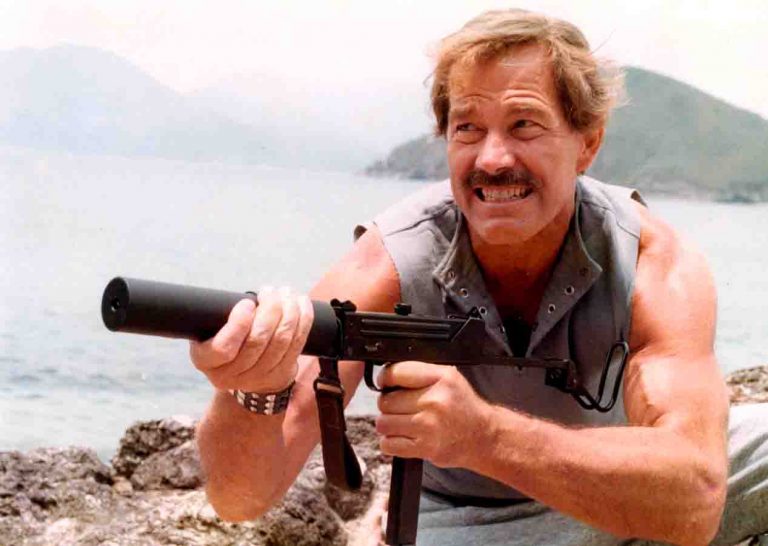 Richard Harrison with a moustache in Majestic Thunderbolt, the very first film he made for IFD, shot during his first stay in Hong Kong which started in April 1983.
Richard Harrison with a moustache in Majestic Thunderbolt, the very first film he made for IFD, shot during his first stay in Hong Kong which started in April 1983.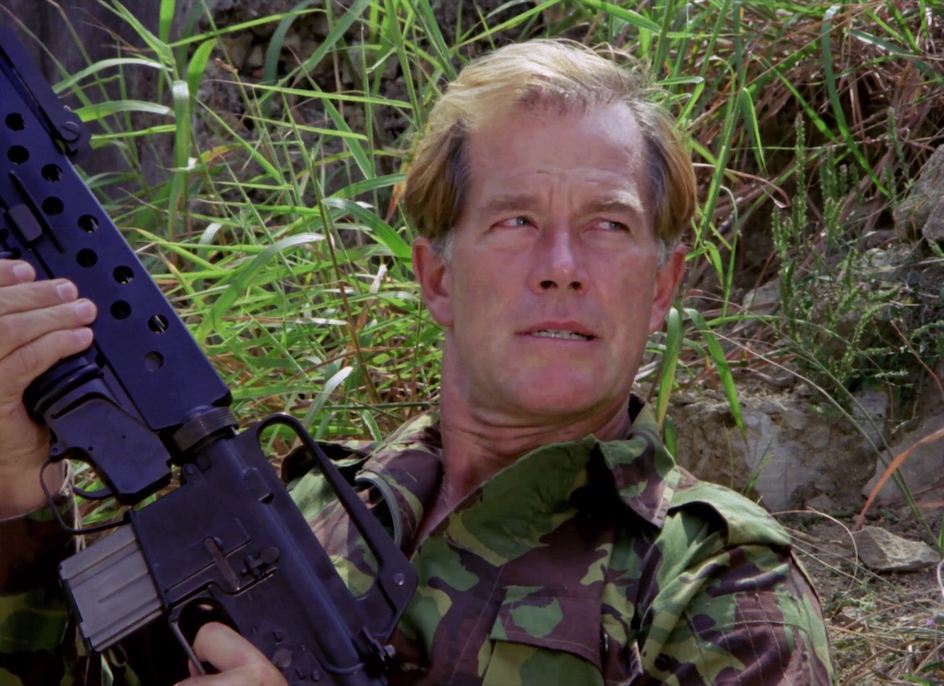 Richard Harrison hairless in Hitman the Cobra, shot during his second stay. The American actor left Hong Kong in october or november 1986.
Richard Harrison hairless in Hitman the Cobra, shot during his second stay. The American actor left Hong Kong in october or november 1986.
So we defined that when we needed a shot with his face, obviously it’s him, but as soon as he wore a ninja mask, it’s a stuntman. He could not fight anyway, so we used our men. The German liked the films, they were happy to see Richard Harrison (laughs).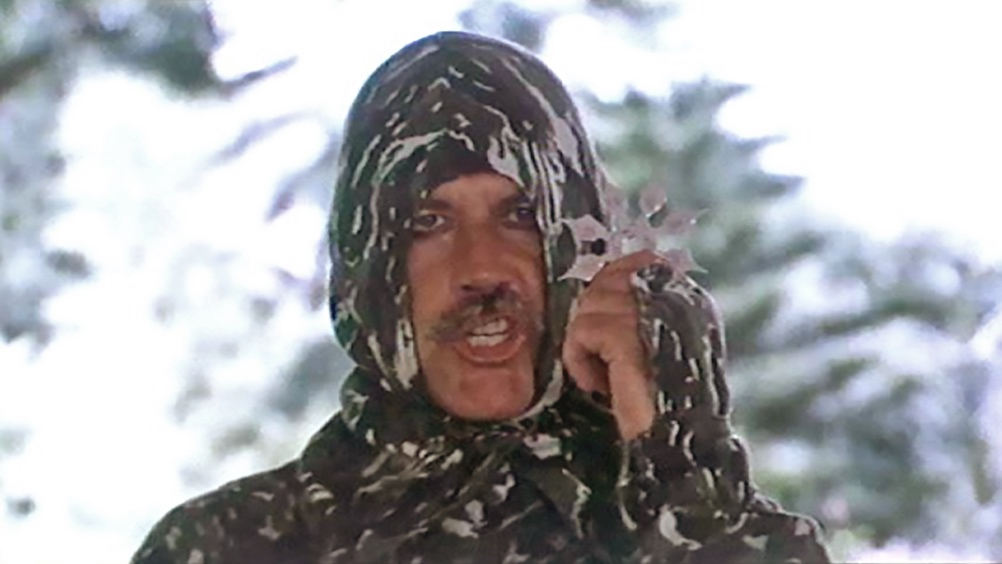
We heard Jean-Claude Van Damme almost worked for IFD. Can you tell us about it?
Jean-Claude Van Damme came to my office. He proposed to work for us. But my people were very busy then, they told him to leave his card, his informations. We had so many projects, we could not just drop them and do something right on the sport, even if had indeed a good look and good martial arts. And finally he left. To this day, he’s still angry about me because he proposed a very good price to me (laughs).
When did you start working with Godfrey Ho?
Godfrey was my university classmate. When I met him, he was assistant director to Chang Cheh. He was the one directing the films for us. He did quite a good job for us and I quite admire him.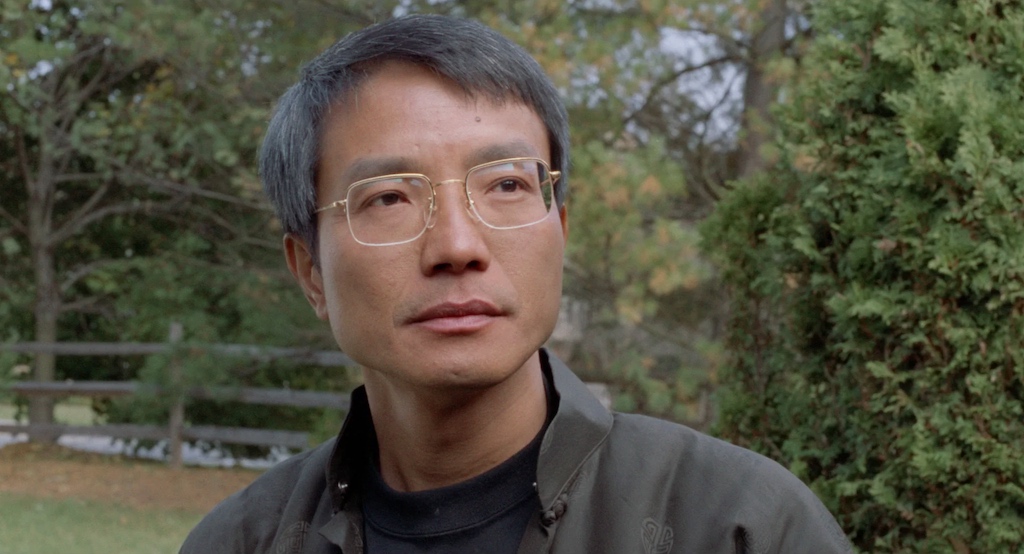 Godfrey Ho in 2004 in Undefeatable.
Godfrey Ho in 2004 in Undefeatable.
What was your relation with producer Tomas Tang?
It’s a tragedy. As I told you, I studied education. I was living in the dorm of the school. I was living in the same room as Tomas, we graduated the same year. He came from a village, I came from town, but we were very close. So I was the one telling him to come to do film business. Later on, we were partners. He had his office in the same building as us, a fire happened and unfortunately he died. I was lucky to manage to escape. I was working on my computer when the fire happened. If I knew he was there, I would have gone to help him.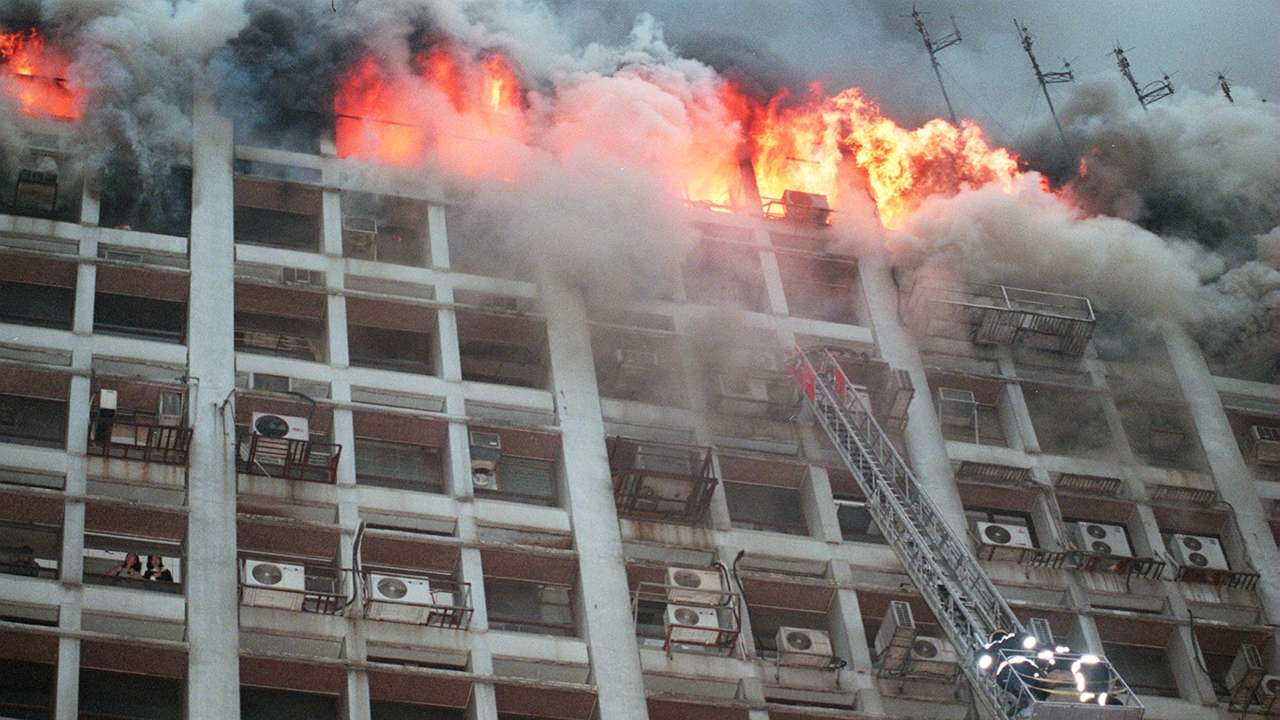 On November 20, 1996, a fire broke out in the 16-storey Garley commercial building located on Nathan Road, where IFD and Filmark, Tomas Tang's company, had their offices. The fire killed 41 people, including Tomas Tang.
On November 20, 1996, a fire broke out in the 16-storey Garley commercial building located on Nathan Road, where IFD and Filmark, Tomas Tang's company, had their offices. The fire killed 41 people, including Tomas Tang.
Tang had established Filmark, a company which was kind of copying the IFD model, inserting shots featuring Western actors in existing Asian films. Was it bad for your business?
Because we had the same idea, he did what I did. But in HK, only a very few companies were doing that, and the market was big enough, so it wasn’t a problem.
In the early 1980s, your name is associated with some Taiwanese films like Pink Force Commando, Golden Queen's Commando or Phoenix The Raider. Can you tell us exactly what you did on those films?
As I told you, I bought many Taiwanese films. All those films were made by a good production company [Nanarland: Teng Kuei Film Company]. I bought the rights of those films but not the whole property. So I sold them to France. The French distributor did very good money with them.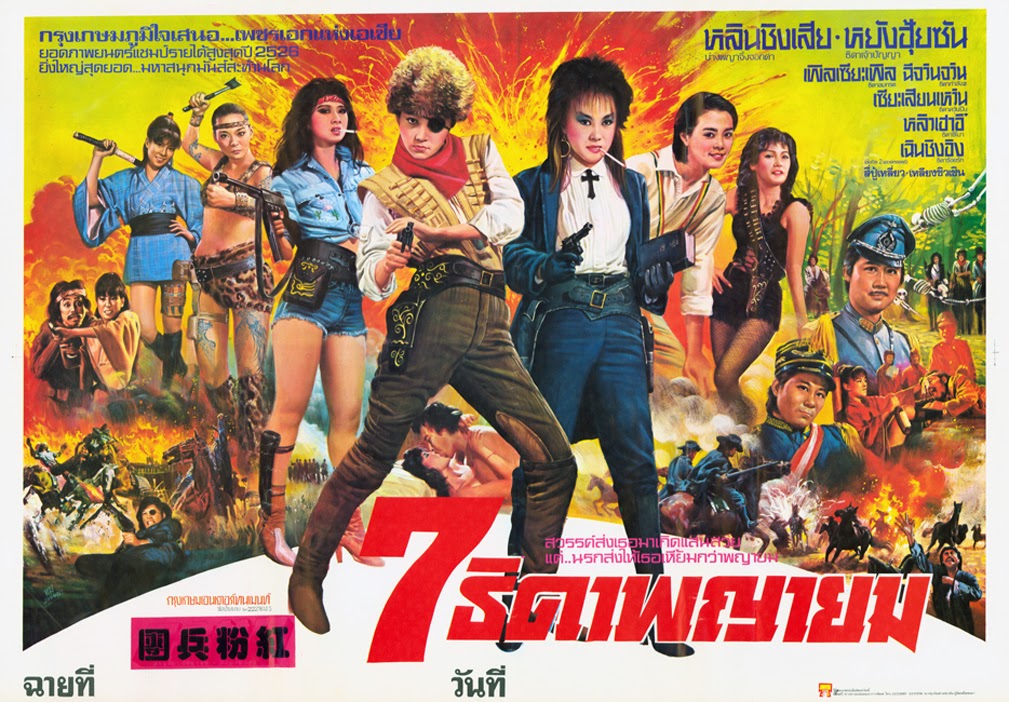 A Thai poster of Golden Queen's Commando, a very fun Taiwanese movie distributed by IFD in 1982.
A Thai poster of Golden Queen's Commando, a very fun Taiwanese movie distributed by IFD in 1982.
How much would you pay to own the property of those films?
To own the property, it depended on the territory. The cheapest country to buy films was the Philippines. It was like 10.000 US$ per film. In Thailand it was around 15.000 US$, Korea 20.000 to 30.000. Taiwan was around 40.000 to 50.000 US$. But when I shot a film, I also had to invest money. It would usually take 15 to 20 shooting days. It would cost me like 60.000 to 70.000 US$. It was not cheap. Comparatively, Ng See Yuen would make a full film for about the same amount of money. [Nanarland: Ng See-Yuen directed Game of Death II and produced films starring Jackie Chan such as Snake in the Eagle's Shadow or Drunken Master].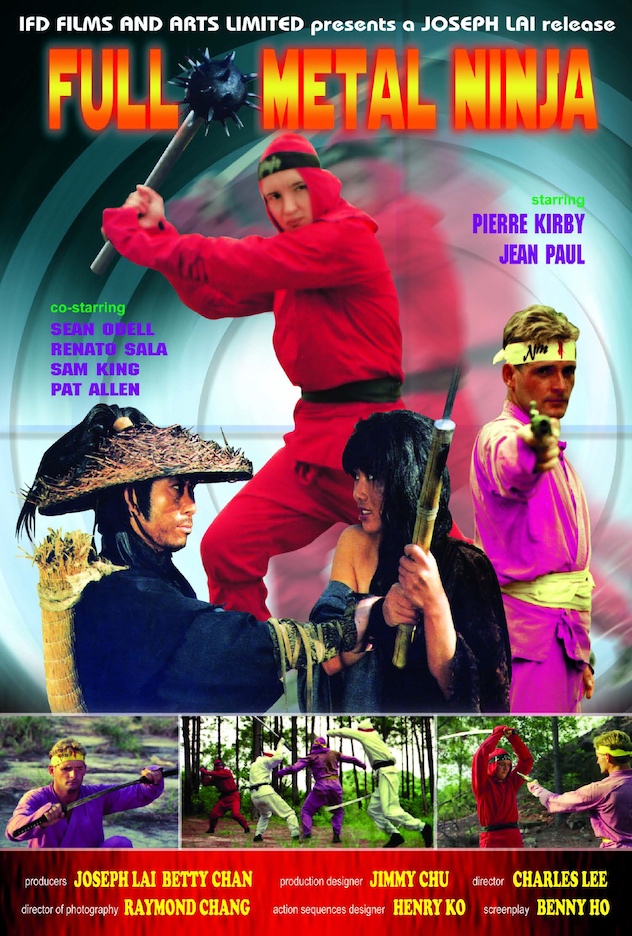
How much would you sell them after?
For Germany, I would get 20.000 to 30.000 US$. France, 15.000 to 20.000 US$. Spain, 15.000 to 20.000 US$. Greece, 3.000 to 5.000 US$.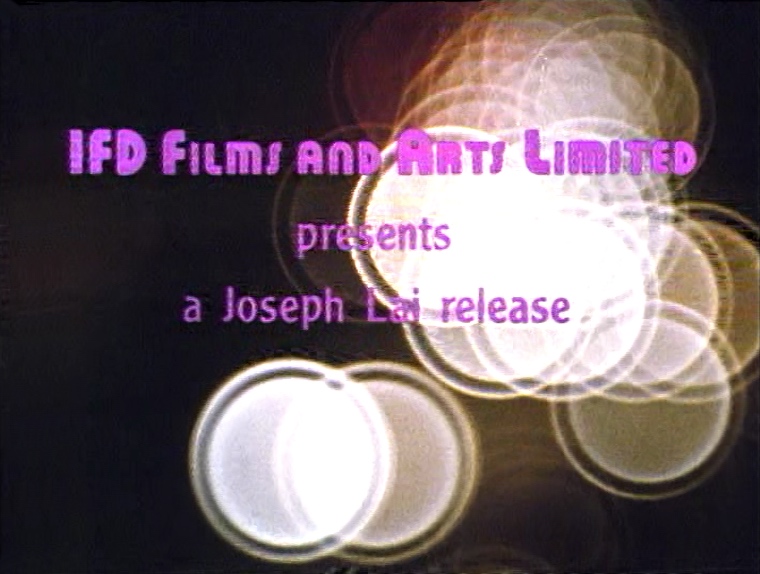 IFD's first jingle, used to introduce movies produced by Joseph Lai.
IFD's first jingle, used to introduce movies produced by Joseph Lai.
Would you change the credits of the first film you used in order to fit better with your final product?
Nowadays, we try to keep the original names in the credit. But European and American people could not spell them properly. Even if you said Chow Yun Fat, it was very hard for them. So the American and European people suggested we used names familiar to them. Georges or Richard. It was not my original idea but it was helpful for the people to recognize them. I wanted to keep them originally. Now, the things have changed and it’s easier for them to recognize.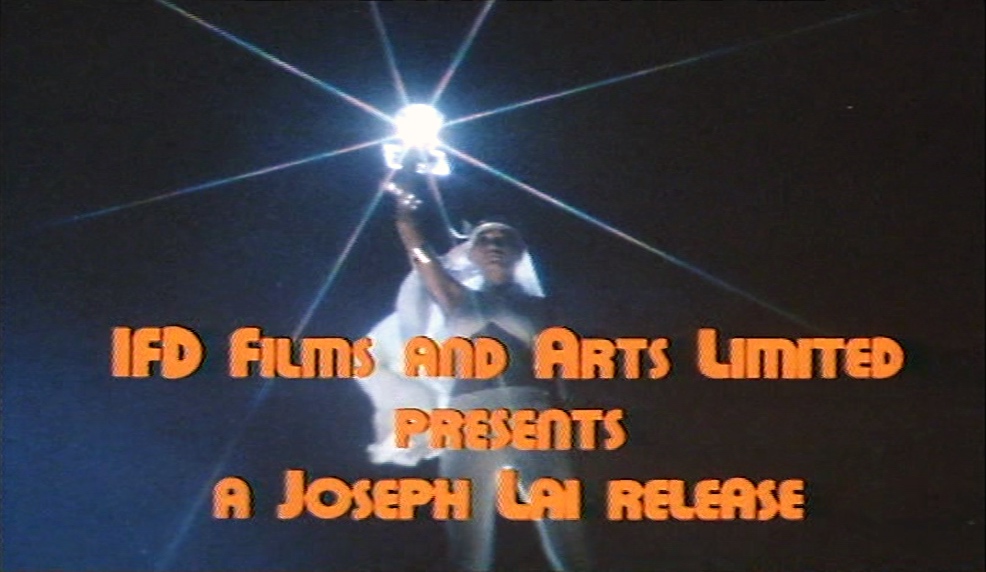 IFD's second jingle. This shot comes from Taiwanese film Pink Force Commando, and the music that comes with it is from... Star Wars!
IFD's second jingle. This shot comes from Taiwanese film Pink Force Commando, and the music that comes with it is from... Star Wars!
Bruce Baron has been very critical about his involvement as an actor with IFD...
Yeah, but I don’t know why. When he shot stuff for us, we didn’t have any problem with him. I know he always came back to our office to ask for his material. But we were very careful about giving things because of the intellectual property rights. So maybe my people didn’t give him all he wanted and it led to his anger.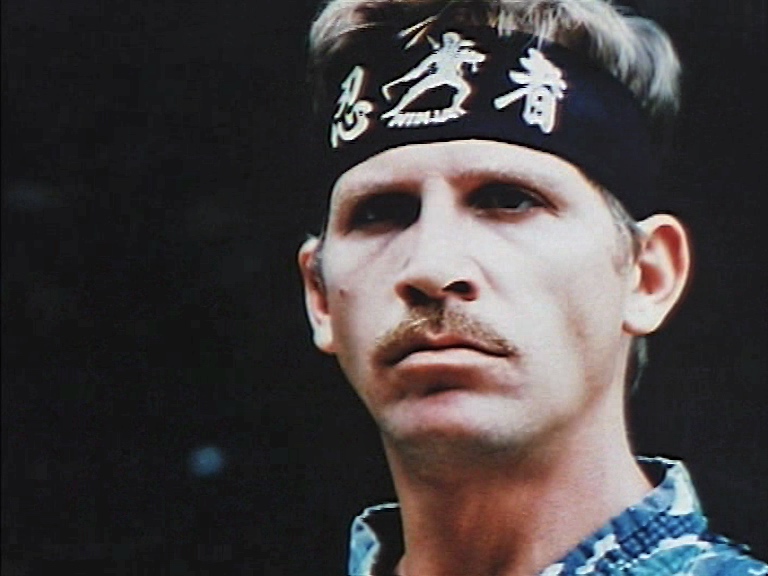 Bruce Baron in Challenge the Ninja.
Bruce Baron in Challenge the Ninja.
Would you keep the control on who was hired to act in IFD films or would you let some other people of your crew deal with it?
I never interfered with the production crew about that. Of course, we had meeting where we would sit down and discuss what kind of film we would make, what kind of actors and actresses to recruit, what kind of action we would have. But otherwise, I would leave the director and the production manager free to do anything. Godfrey Ho was free to do anything.
Could you tell us about the typical IFD movie creation process? Would you work specifically on one film for one month, or work on different features at the same time?
Usually, we do film by film. But I remember when we recruited Richard Harrison, because of his limited stay in Hong Kong, I told my production people to schedule very carefully. So we shot things for different films with him. He didn’t know but of course, we did. So after, we could edit it and it would be another film.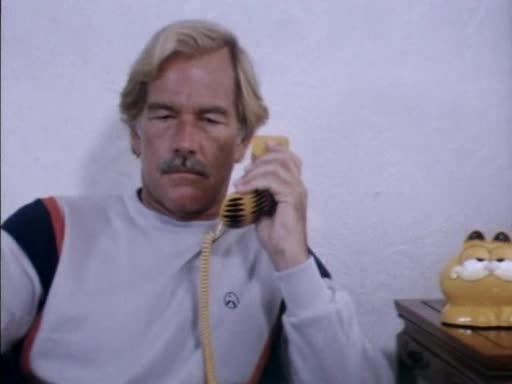
IFD has released a good number of cartoons. Can you tell us where they came from? Were they made only for IFD?
Animation is another one of my interest. In a way, action and animation are similar. And you can use your full imagination when doing animation. But it’s not easy to do an animated film. The layers would take a lot of time. There was no computer at that time. I bought them from South Korea. We would help them complete the film and then distribute them. Later on, we bought the property of Indonesian animation.
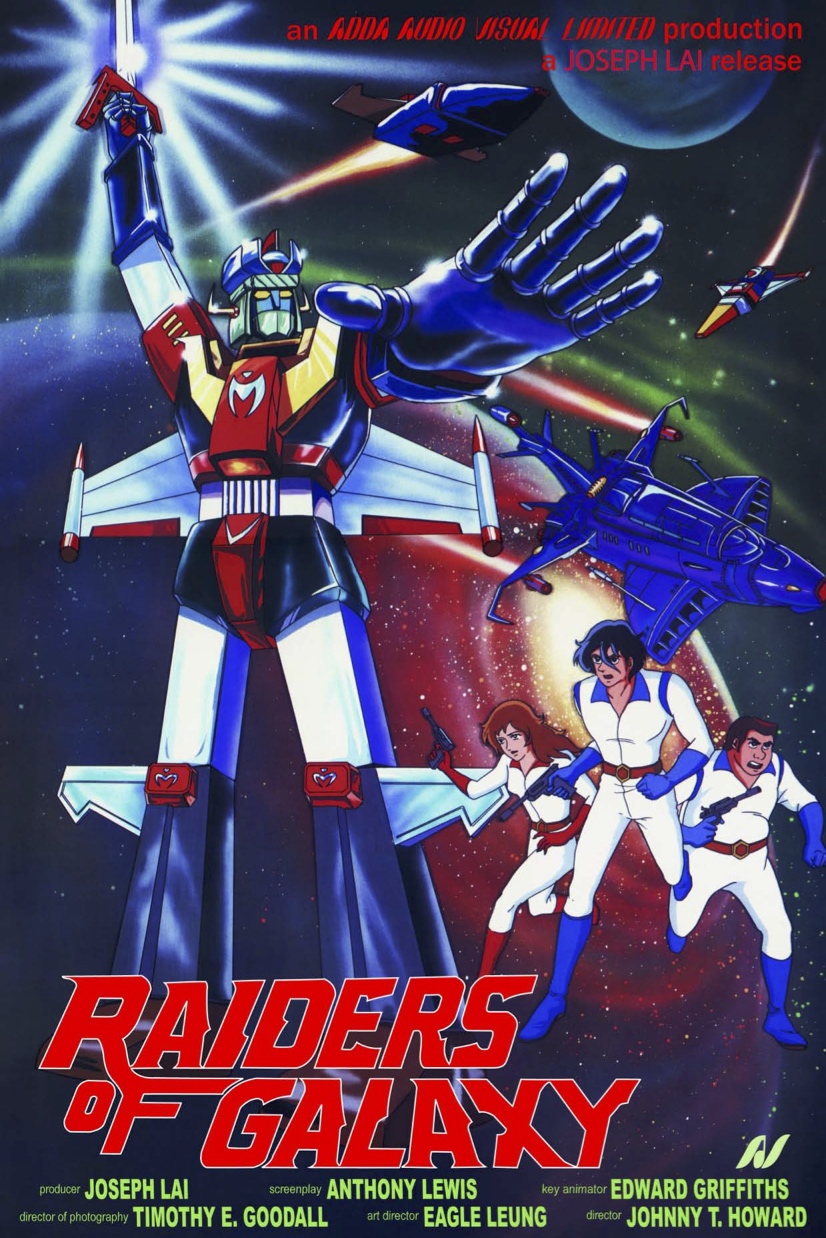

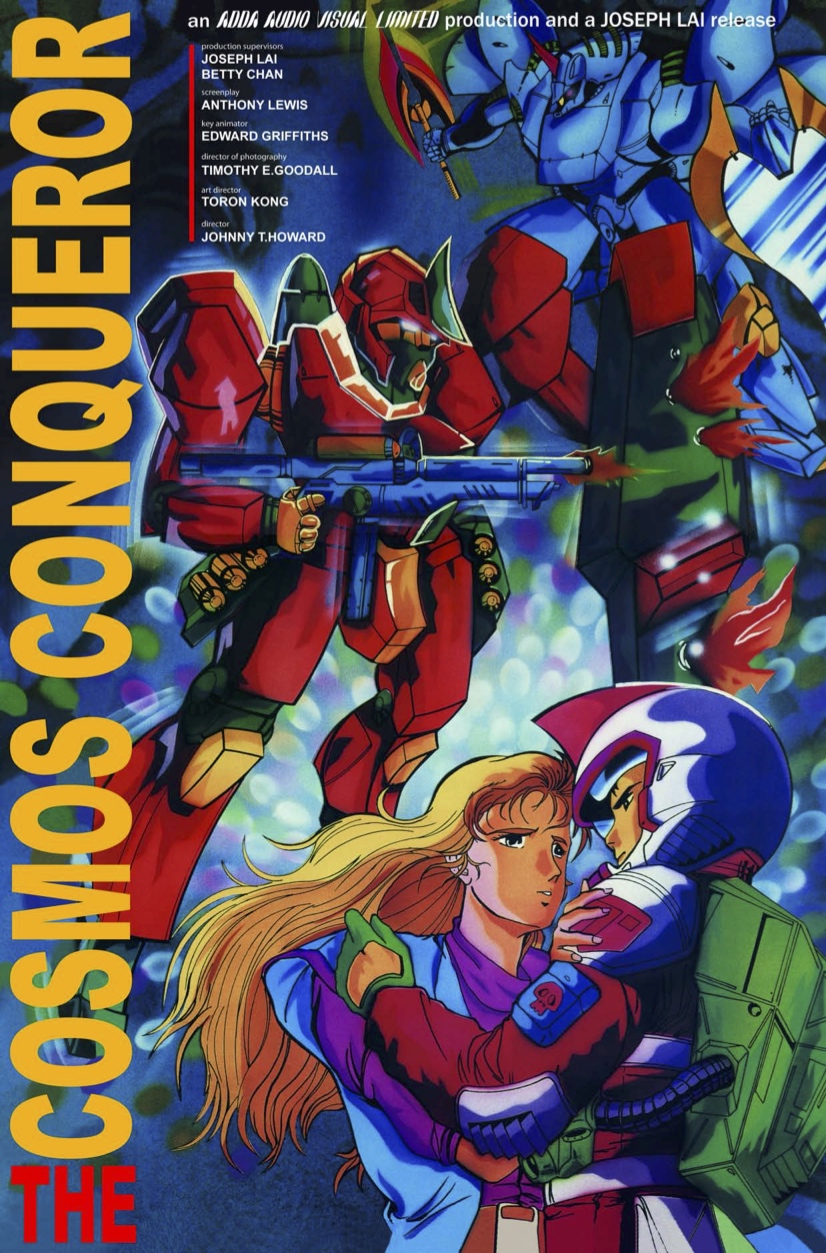
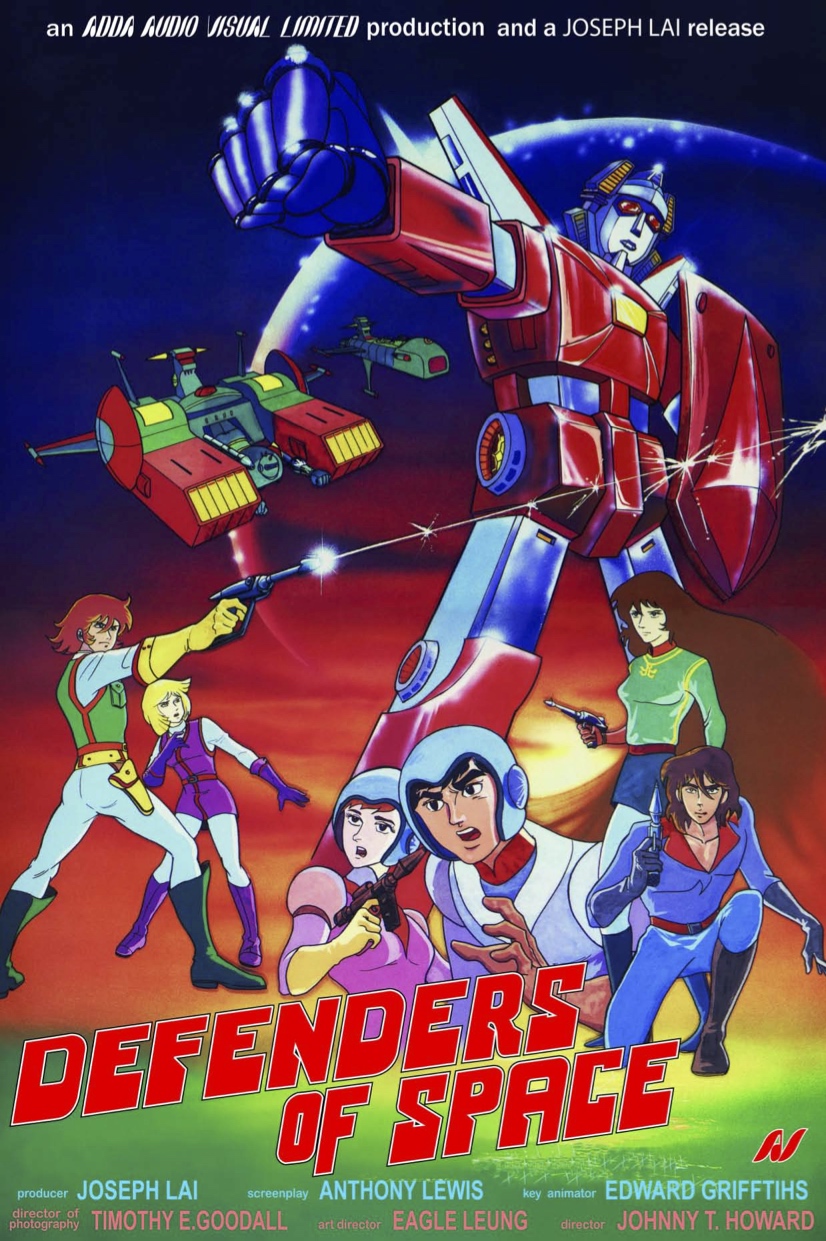
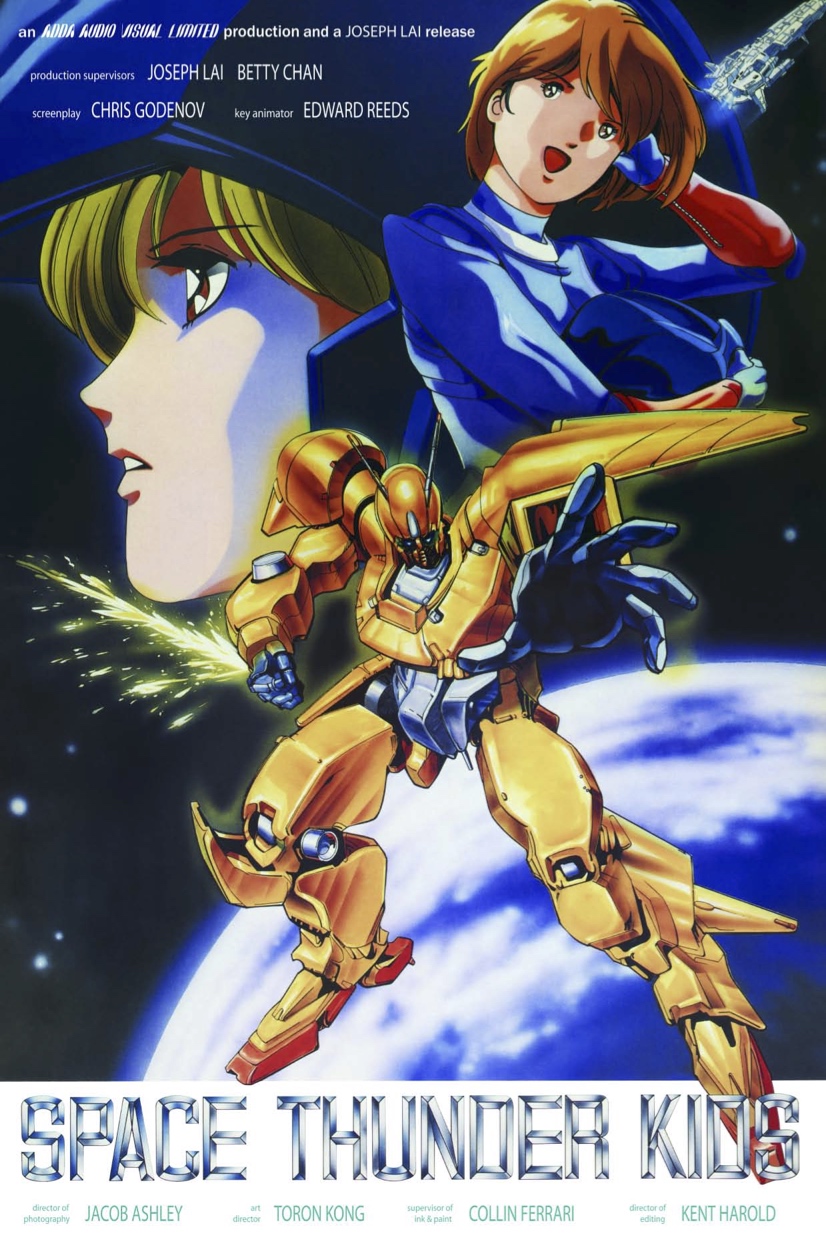
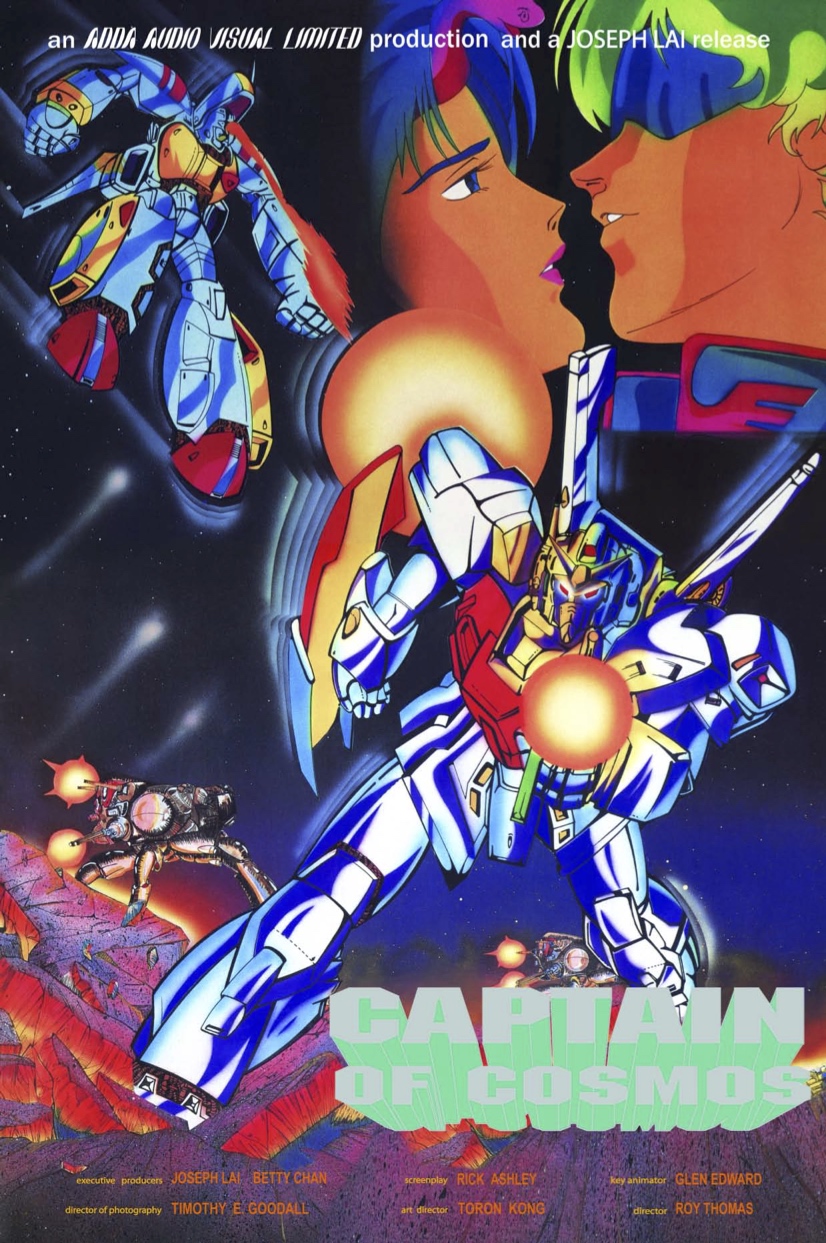
IFD's Korean cartoons (produced under the ADDA Audio Visual Limited banner, their dubbing branch). A parallel universe where counterfeiting reigns with impunity, populated by sub-Transformers, pseudo-Mazinger, ersatz of Captain Future and clones of Captain Harlock.
Did it manage to do a good business in this very specific market dominated by US and Japanese productions?
Yeah, Japanese have their own distribution. And you can’t buy from them because they are very expensive and they don’t want to sell their whole property. No problem with Korea and Indonesia. We don’t make big money with those films but it’s quite steady.
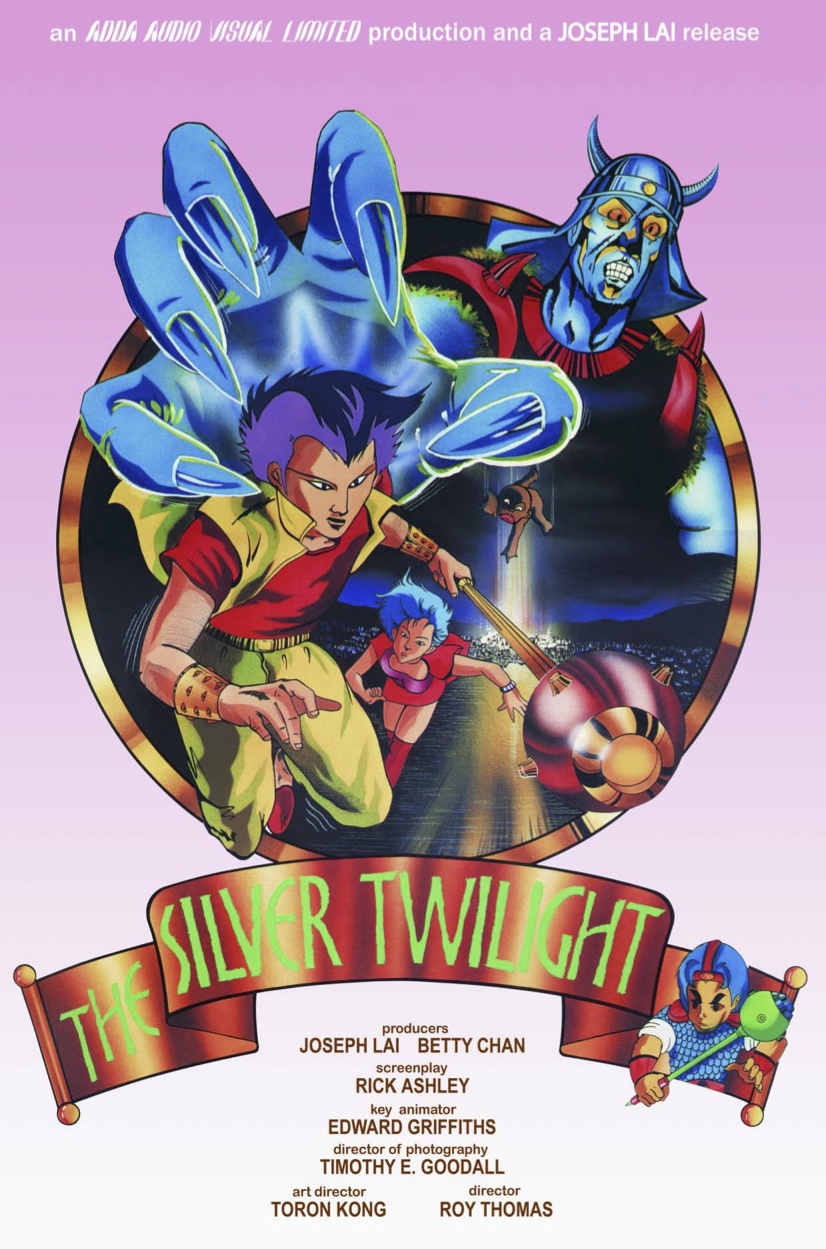
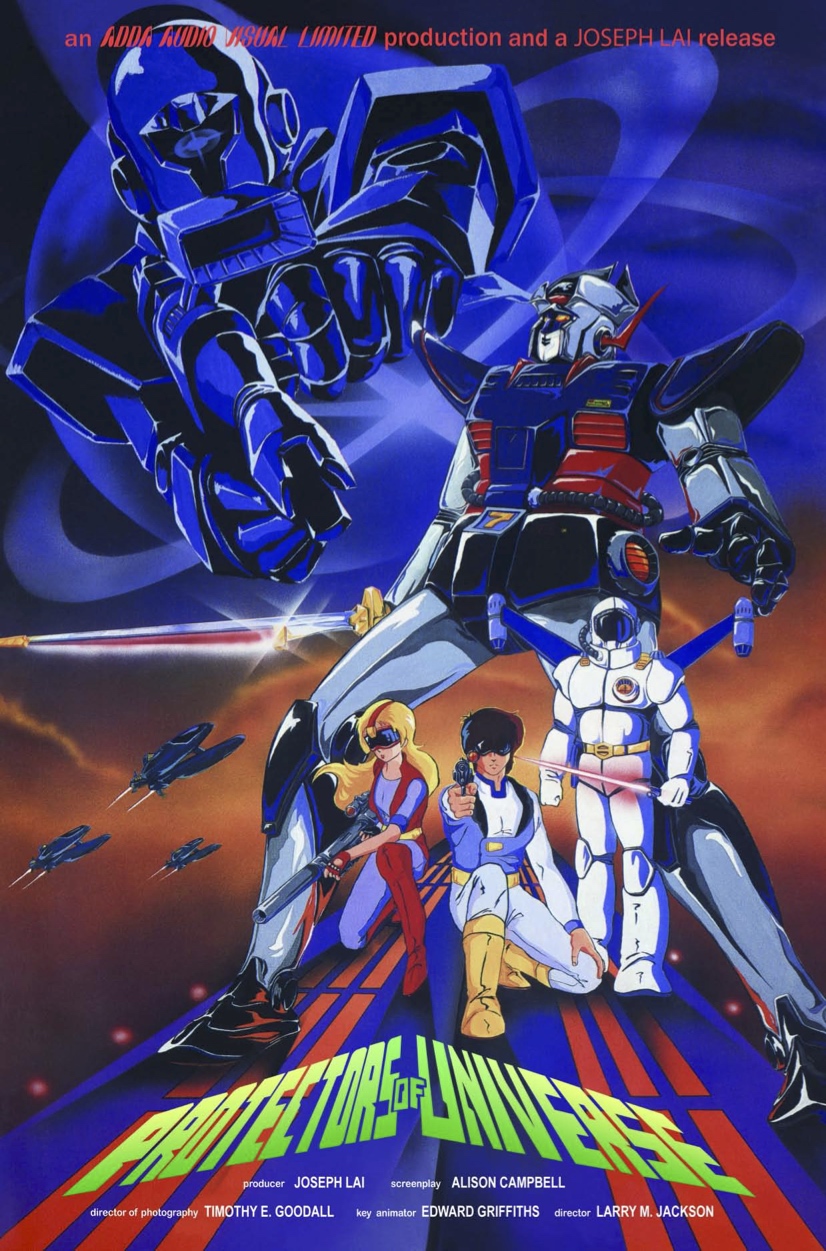
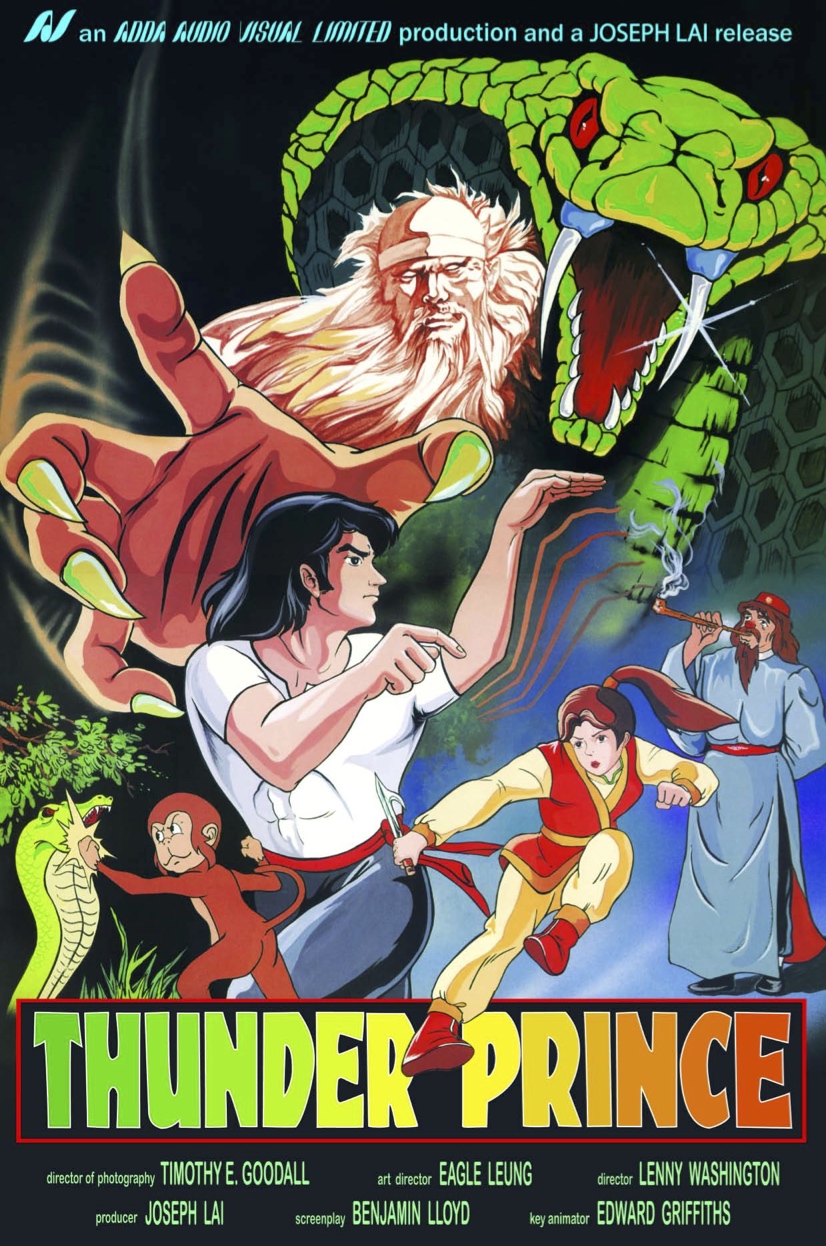
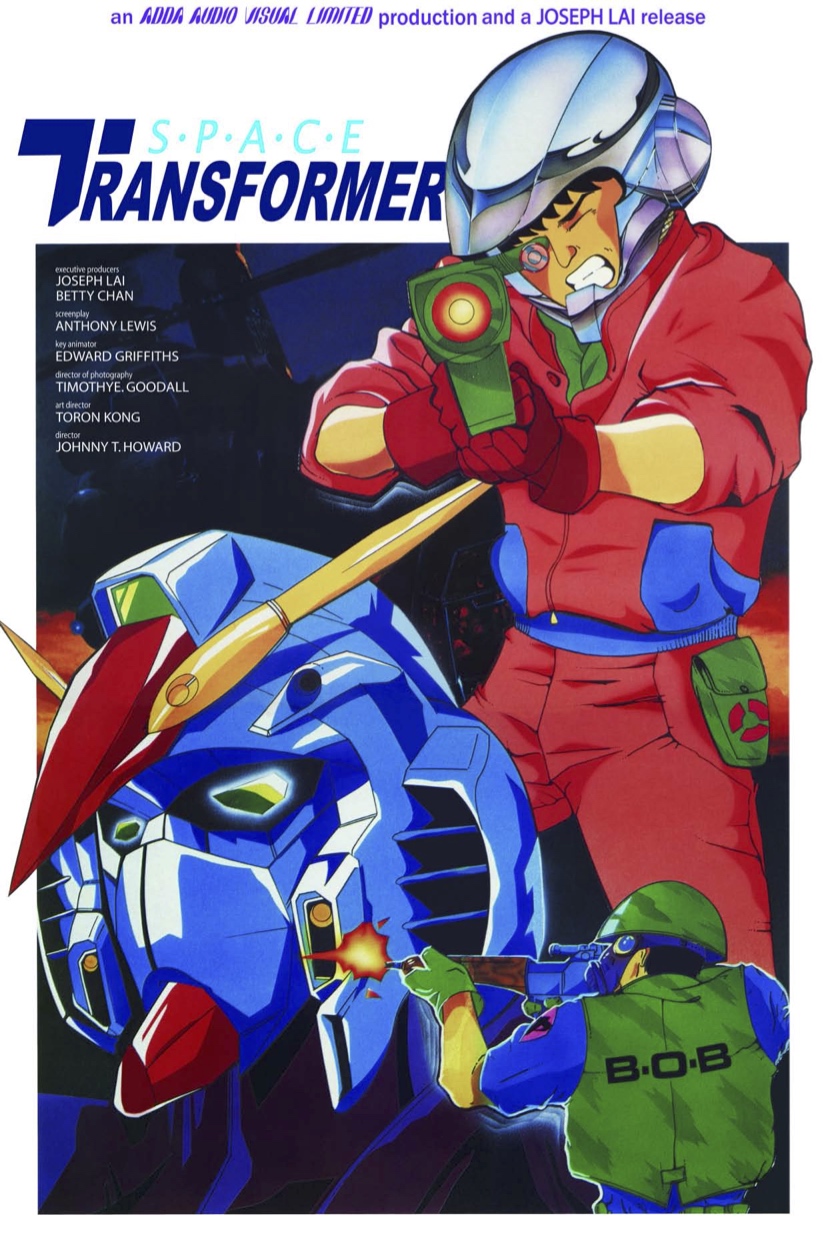

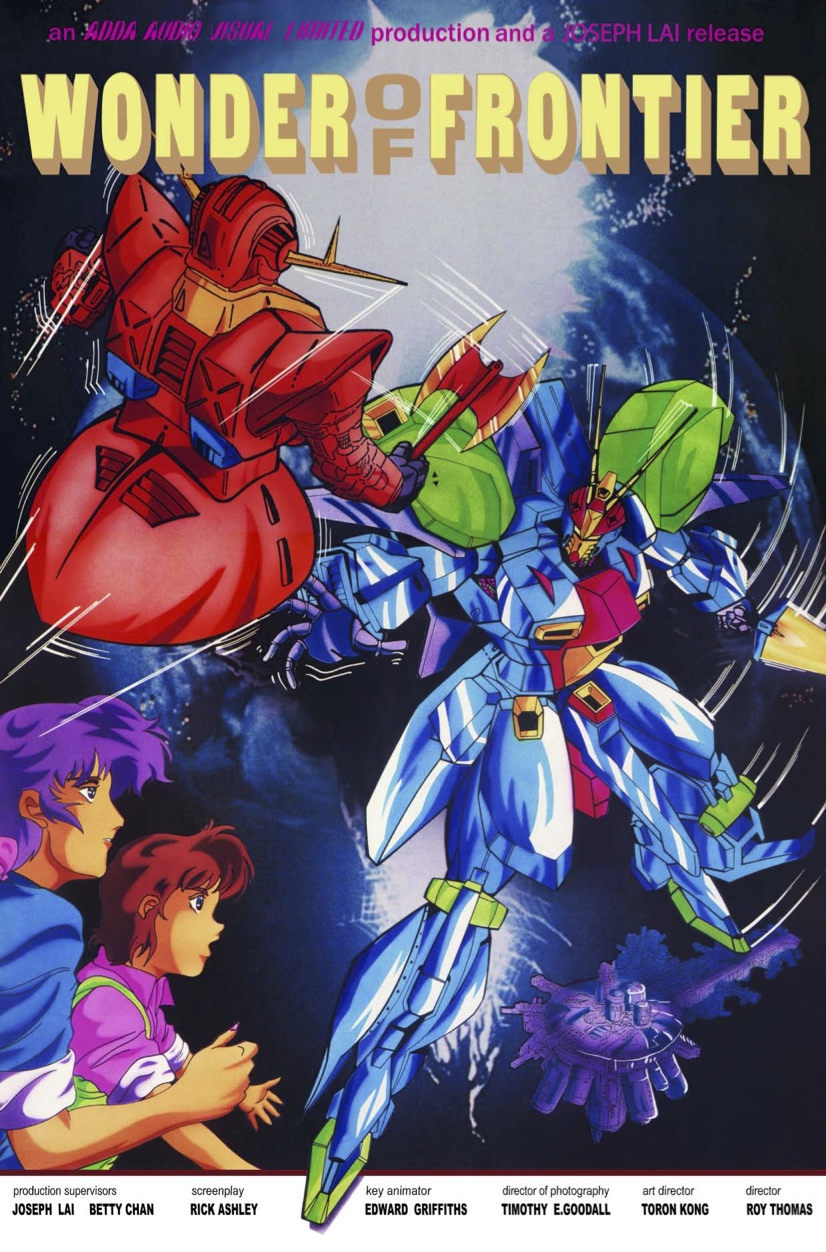
Do you give instructions to the Korean or Indonesian makers about what stories you want, or do you just buy the final product?
I buy the final product. They can do whatever they want, I don’t interfere with that.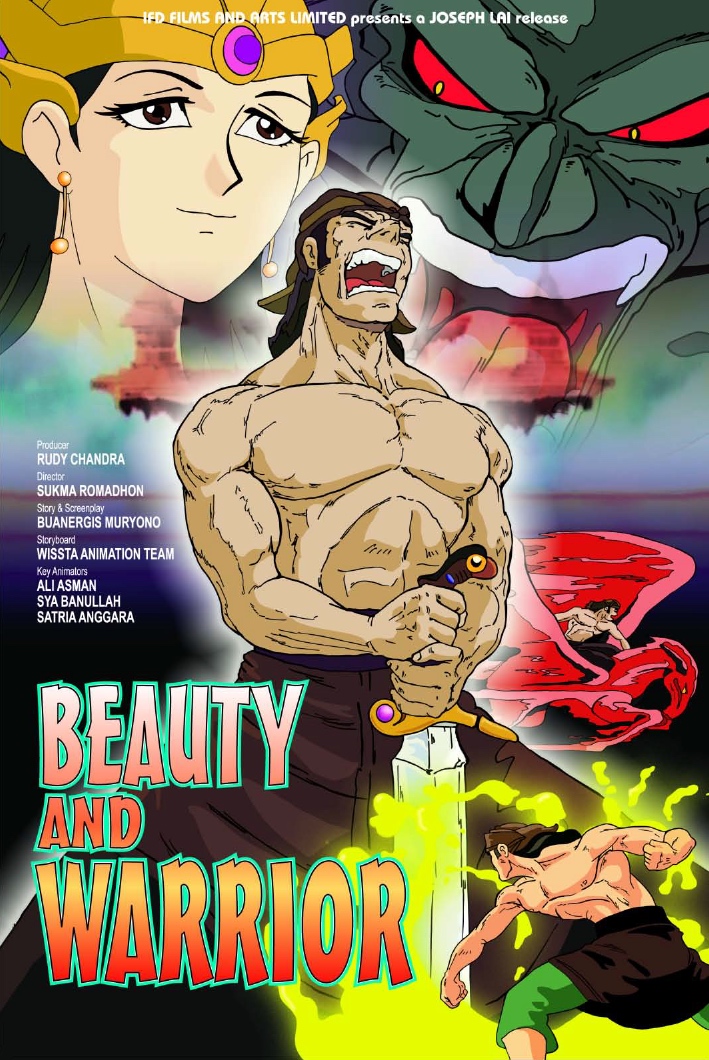 Beauty & Warrior, one of 17 Indonesian animated films co-produced and distributed by IFD.
Beauty & Warrior, one of 17 Indonesian animated films co-produced and distributed by IFD.
The beginning of the 90s saw IFD lose a good part of its presence on the international video market. What is the reason for that?
The market structure changed. The main reason is the satellite. Before, there was video renting. Once the satellite came, it changed the business. Now, with internet, the business is changing again.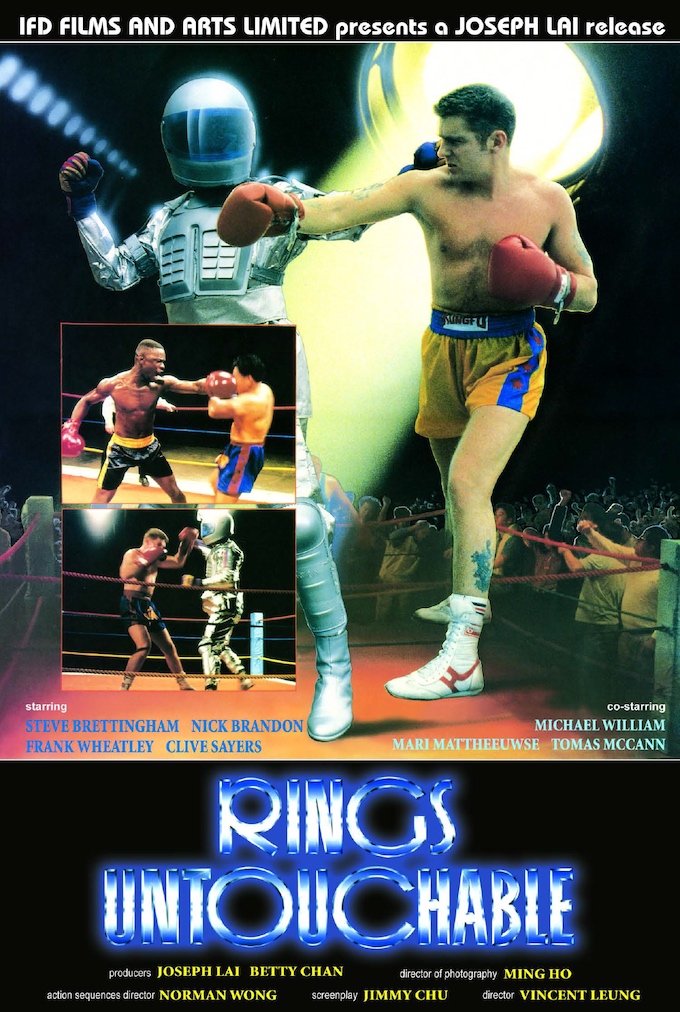
You have recently released a few films like Hero the Great, Dragon the Master ou Big Boss Untouchable with Dragon Sek, a late avatar of Bruce Lee. Why this coming back on the market?
At the end of the 90s, China’s market started to open itself. Certainly, they have strong regulations but it still remains easy to deal with them. So we can do co-productions. So we remain active, even if we can’t produce the same number as before. Dragon Sek is ok in action but he’s still a bit lacking in acting.
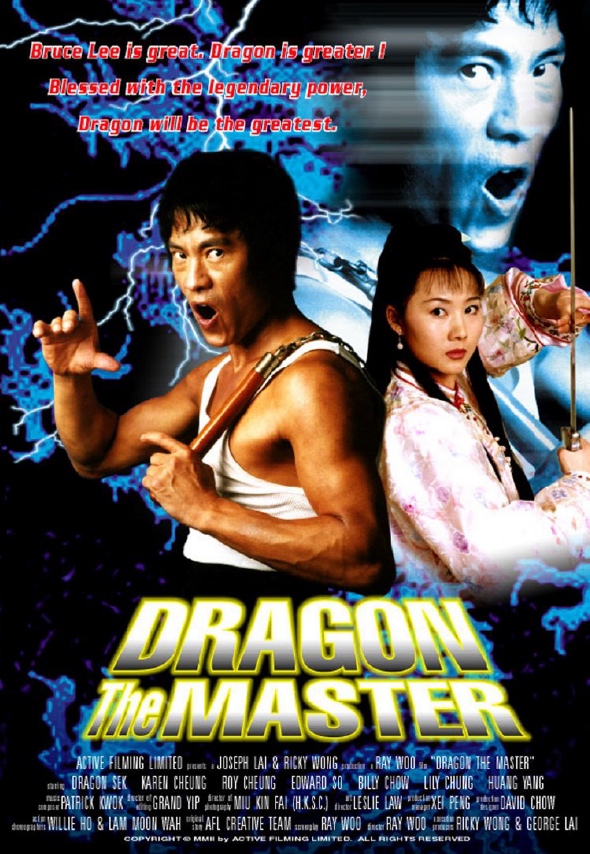 « Bruce Lee is great, Dragon is greater! »
« Bruce Lee is great, Dragon is greater! »
Does it mean you have switched your market toward mainland China?
We still want to export to the USA, Europe but I can tell you the selling price has dropped a lot. For Germany, for example, they can’t even pay 5.000 US$ now. The same with France, they won’t even buy for 3.000 US$. As we were specialized in action films, we only do martial arts pictures when doing co-productions. We can make them because the Chinese market is interested in those films. I think nowadays, 90% of HK film productions companies do the same as I do. We still dub them and sell them in the world though.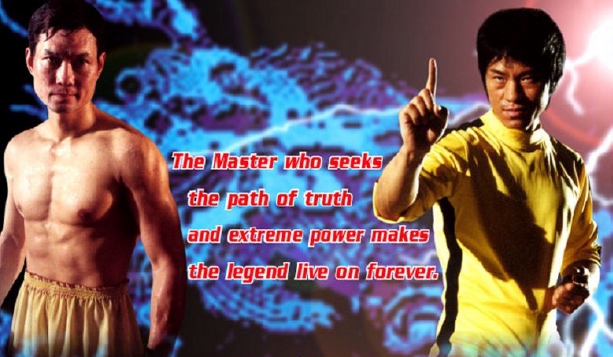
Why use the image of Bruce Lee for these films?
1973 was the year I opened my company. It’s also the year Bruce Lee died. I remember I even went with Chris Mitchum to his funerals. Sometimes, people wonder why I do films using the image of Bruce Lee, it’s because I’m a fan of him myself! Because, if you learn about Chinese history, recent history, Chinese people have met a lot of difficulties. Bruce Lee is someone who really taught to the world what human being is. I mean, if you are really weak, how to stand up, how to be stronger and how to fight your enemy. I admire him for that. He studied philosophy and used it to invent a new kind of martial arts.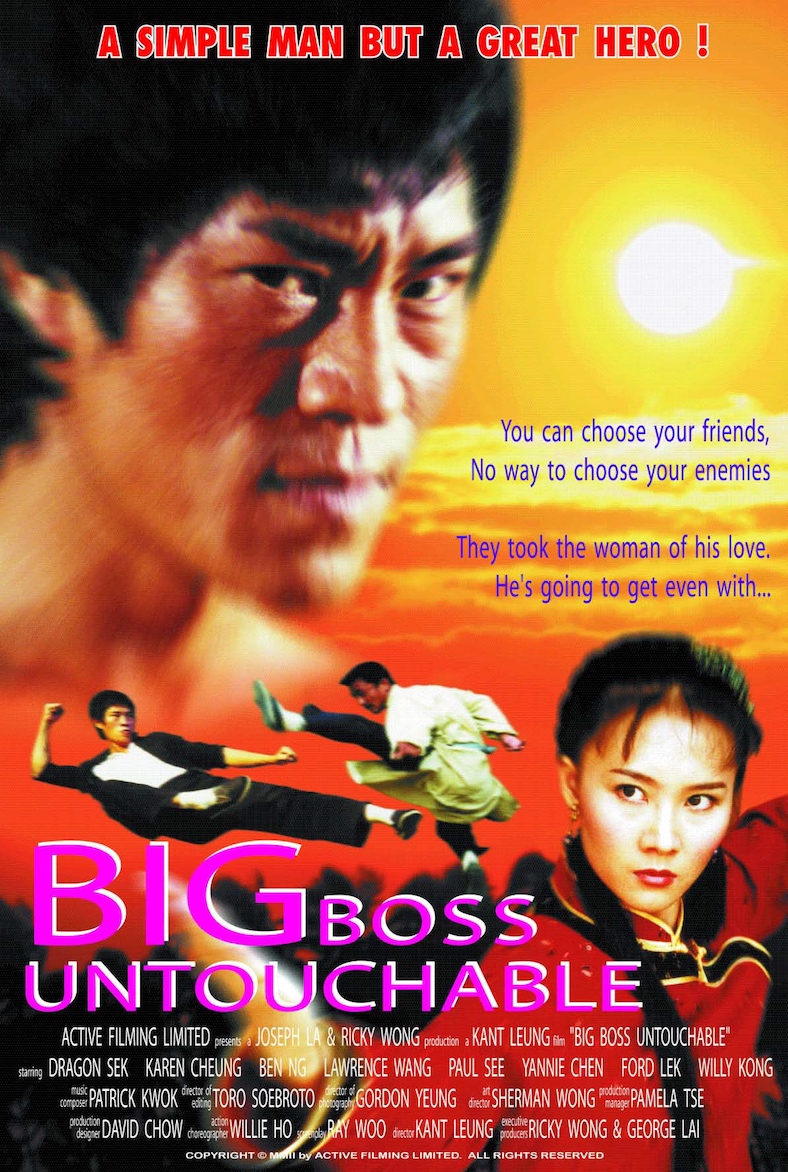
You said one of your original goals was to direct films. How come you never did it through your company?
Because I didn’t have time! I had to guide my people in the production. Godfrey Ho comes from an artistic background, he doesn’t have a business mind. That’s why I guided him all the time to do the films.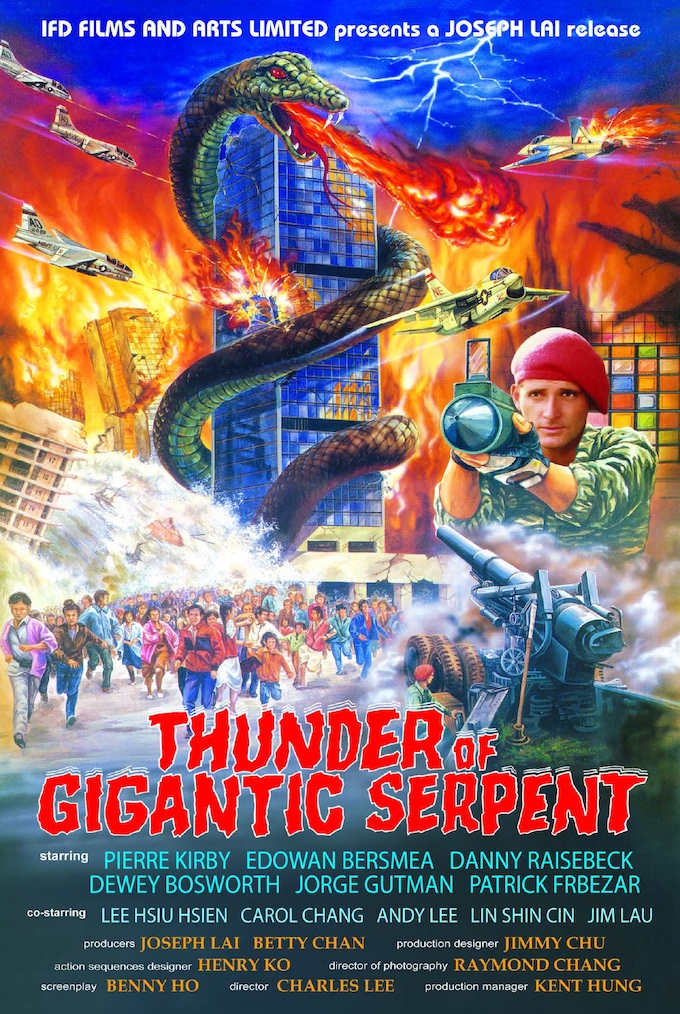
Can you tell us about Alton Cheung, another home director of IFD?
He’s good. He does production in China now. Many of the people who worked for us, we have kept good relations with. I would have dinner with them sometimes.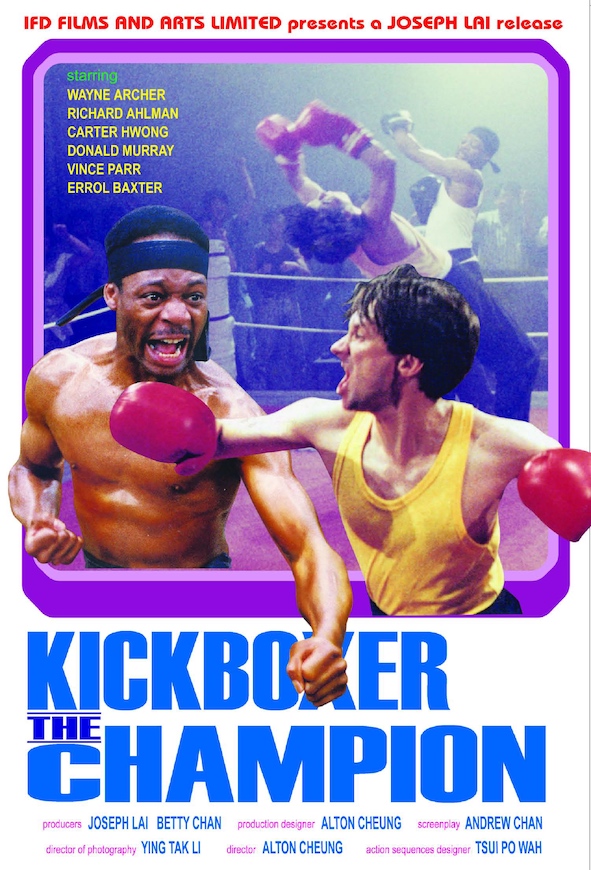 Kickboxer the Champion...
Kickboxer the Champion...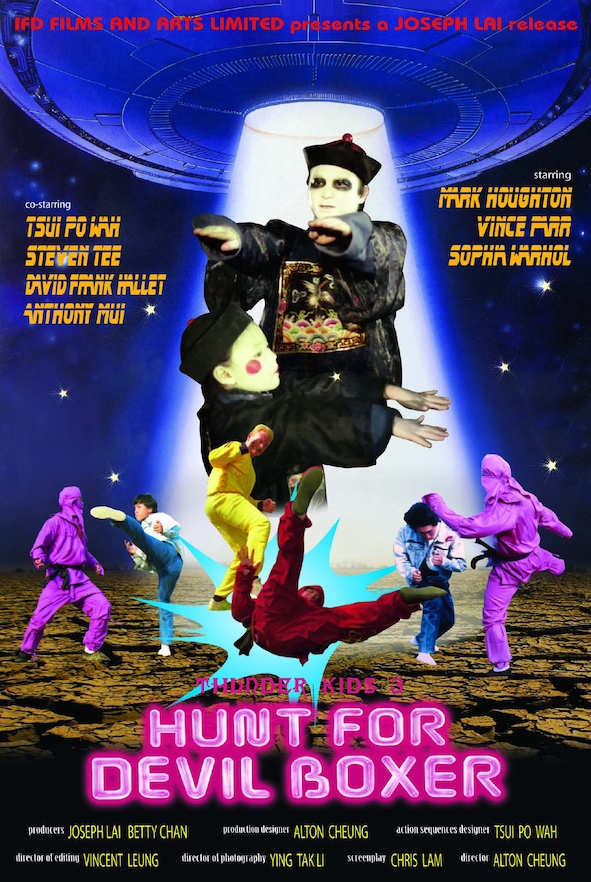 ...and Thunder Kids 3: Hunt for Devil Boxer, two of the IFD productions directed by Alton Cheung (who was not a pseudonym of Godfrey Ho as some have long suspected, nor were other in-house directors like Philip Ko or Charles Lee).
...and Thunder Kids 3: Hunt for Devil Boxer, two of the IFD productions directed by Alton Cheung (who was not a pseudonym of Godfrey Ho as some have long suspected, nor were other in-house directors like Philip Ko or Charles Lee).
What are your plans for the future of IFD?
I’m old now. I’ve been in the film business for 40 years. My family want me to retire. My daughter and son had a good education. I still want to do some co-production with China but I’m not really worrying about it. I will do it if it really seems like an interesting project. But I’m not satisfied with any of my productions. I would like to do a better quality film, but it would involve a lot of money.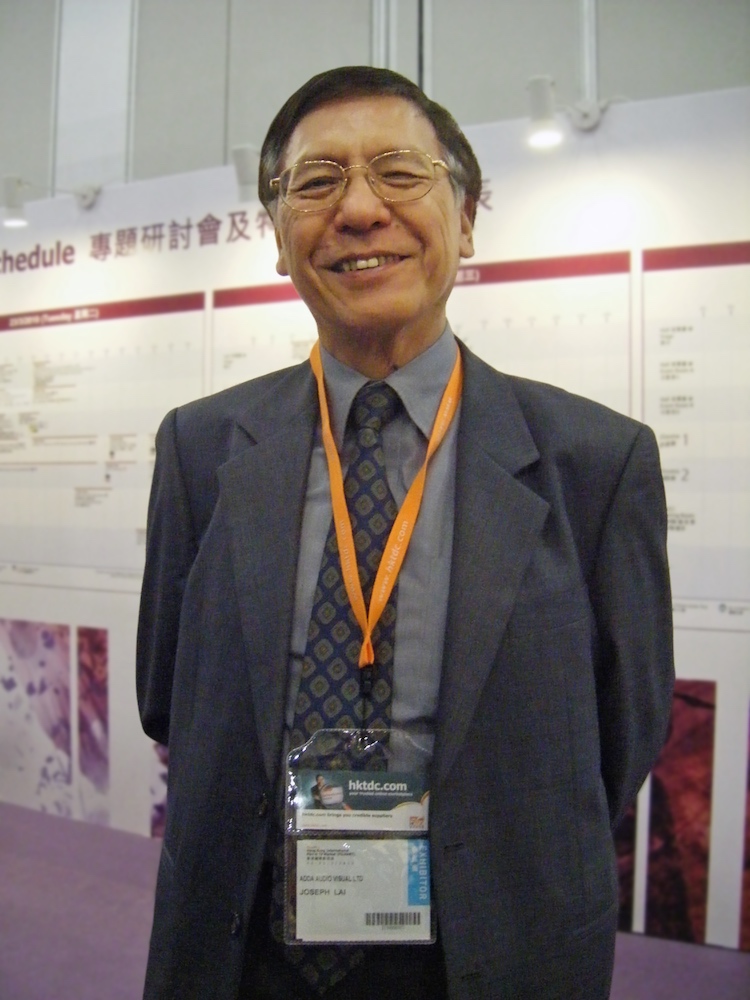
Nanarland: Since the making of this interview, Joseph Lai has eventually retired, after almost 50 years of activity in the Hong Kong film industry. In 2018, he sold IFD and its catalog of films to DVD.com.Ltd / Hate media, two British companies owned by Toby Russell, a well-known huge fan of Asian cinema. Toby and his longtime partner George Tan have since set out to digitize and bring the IFD catalog to life as much as possible.